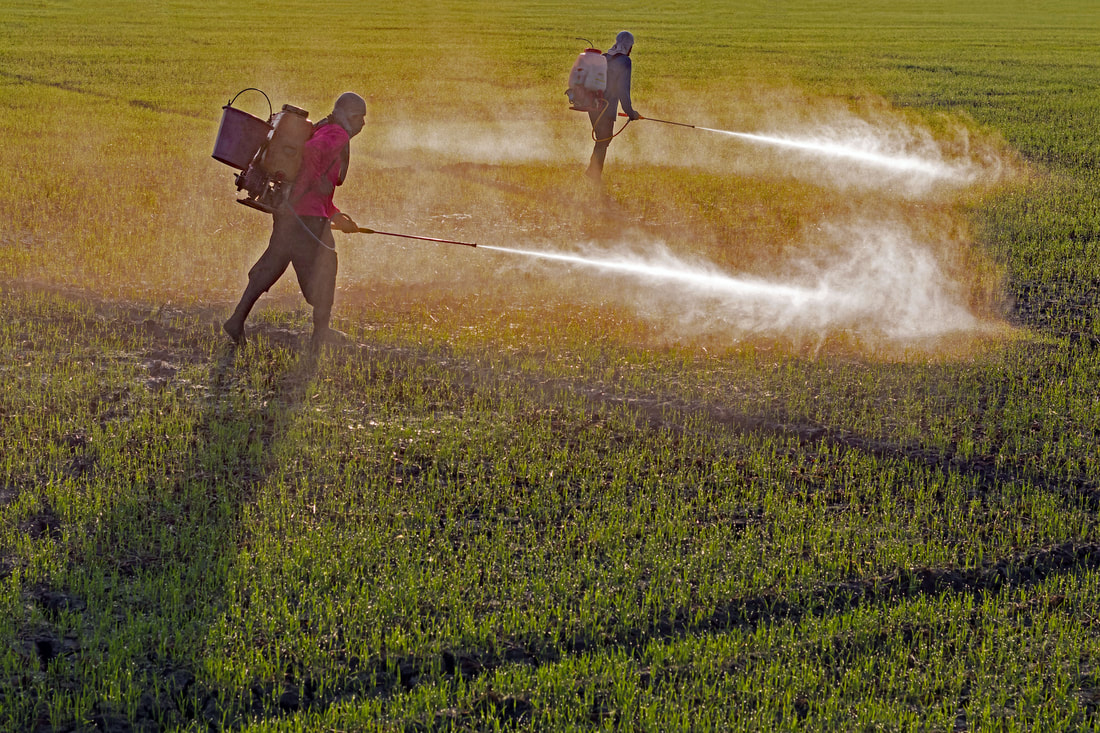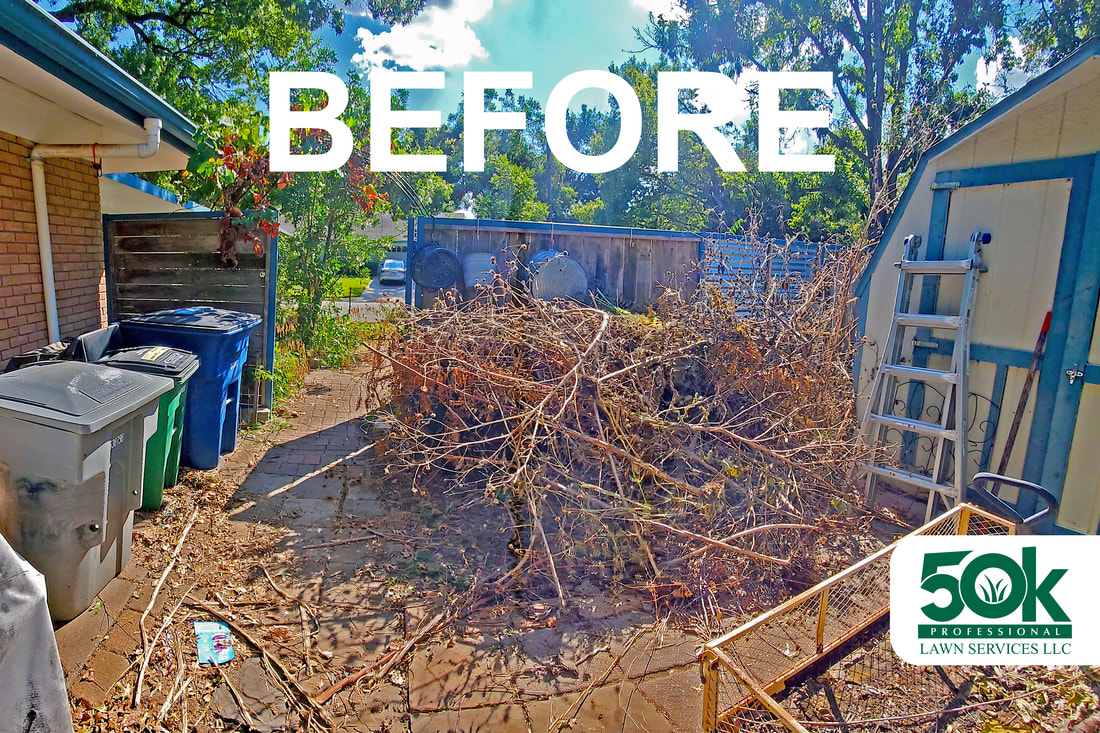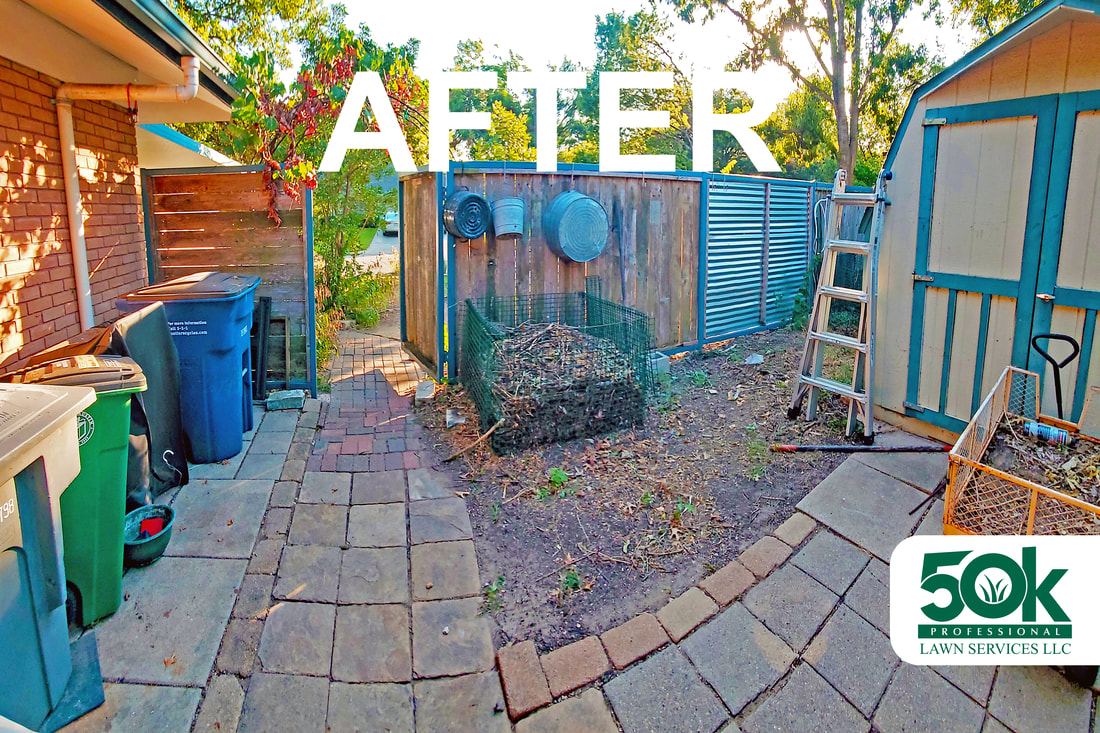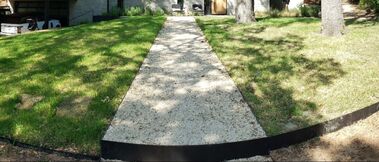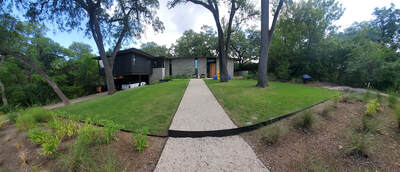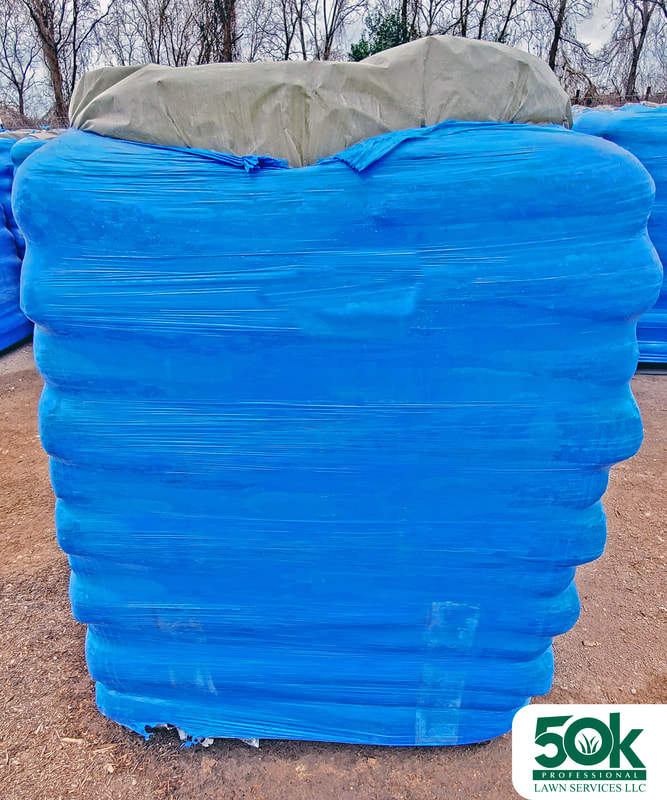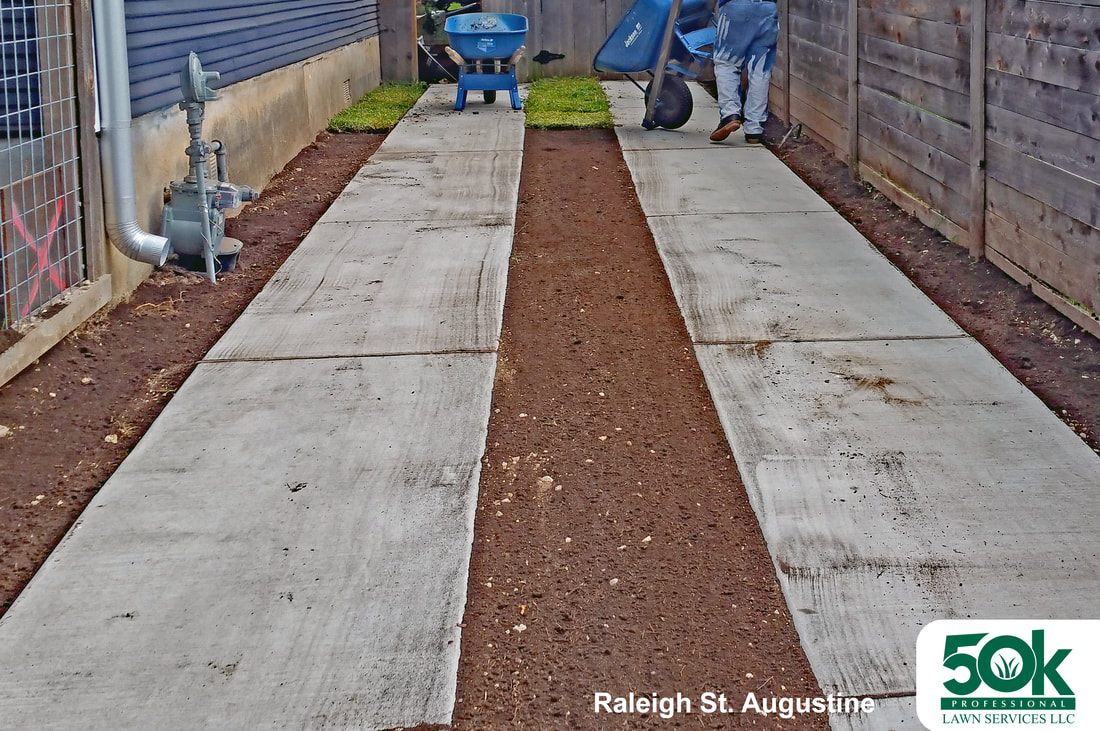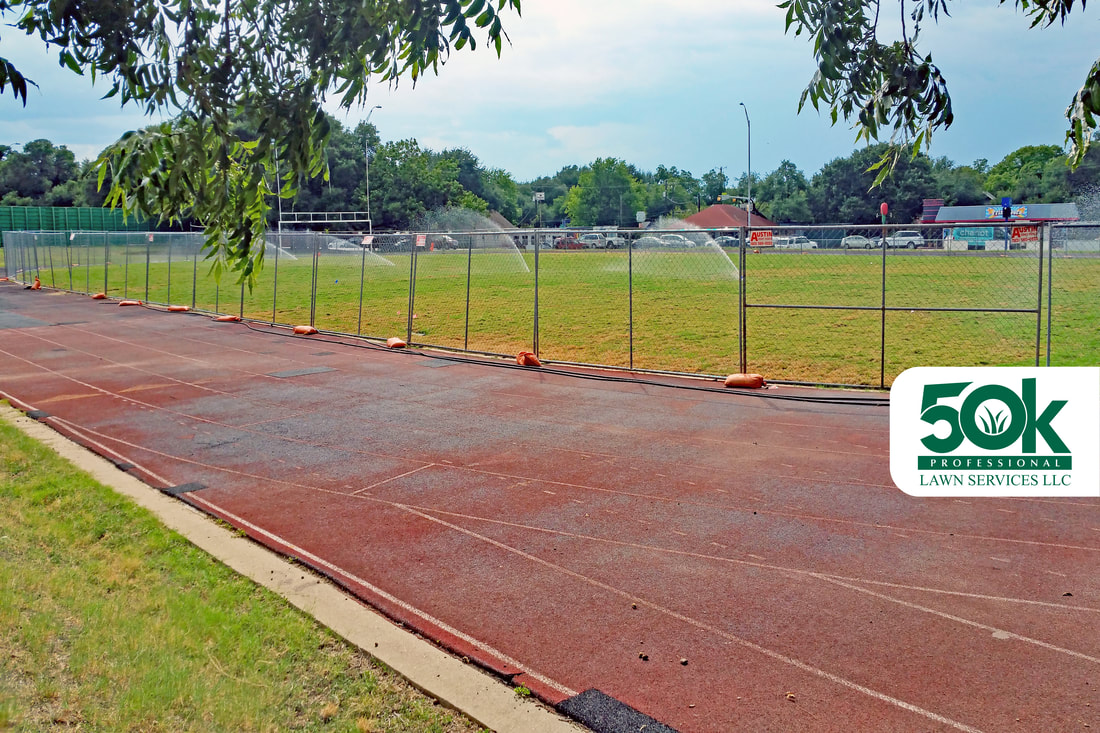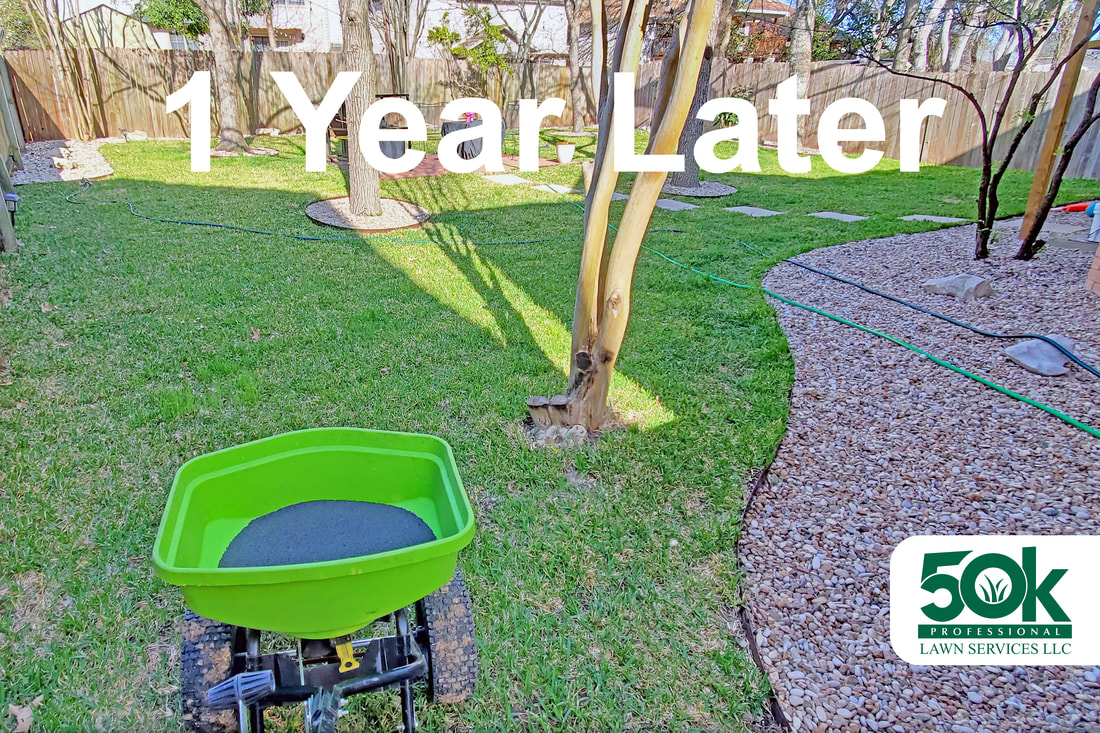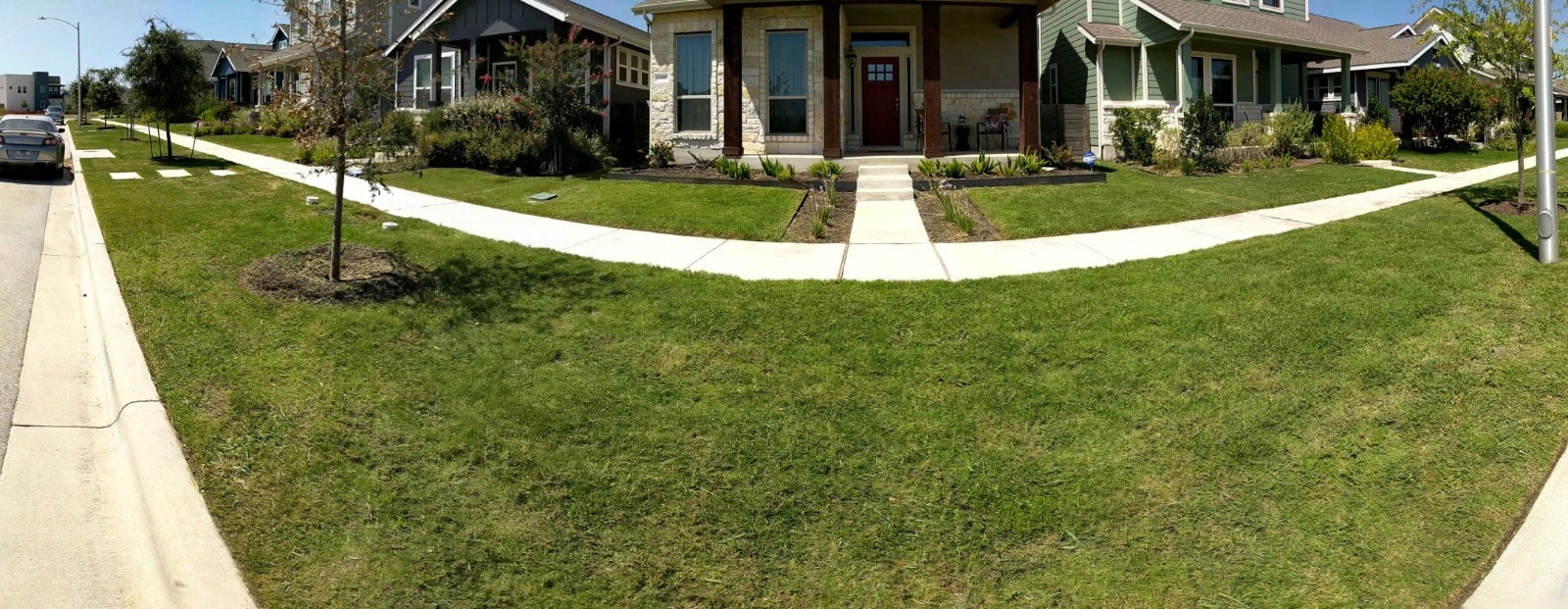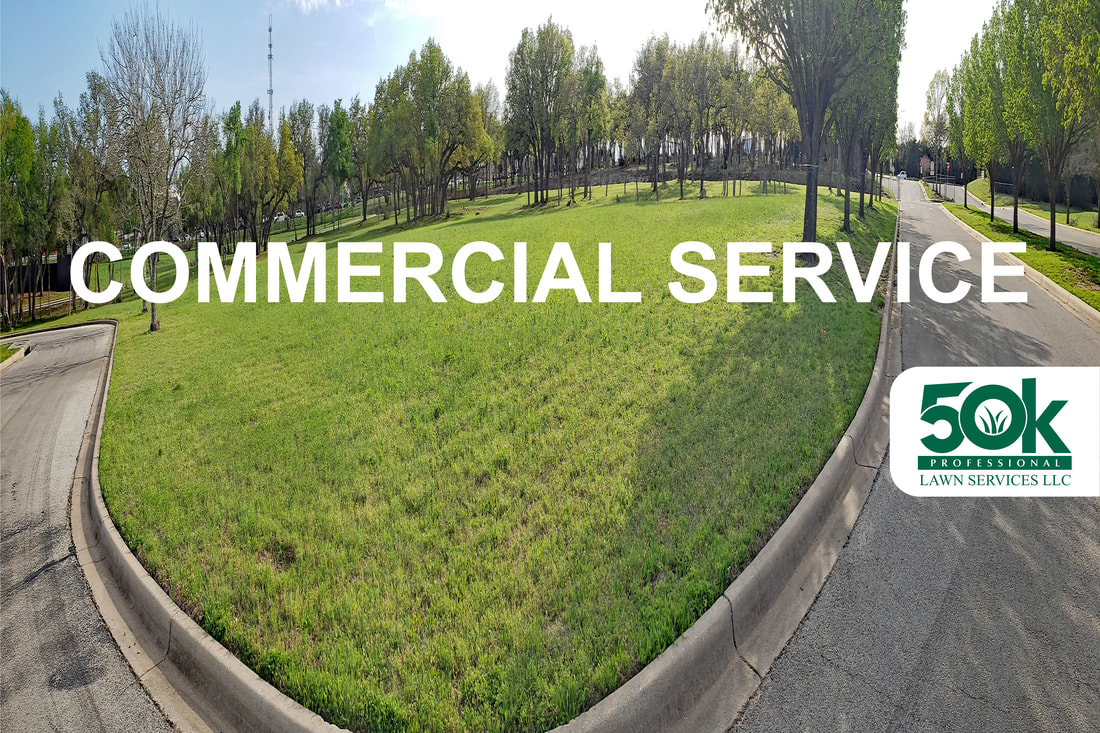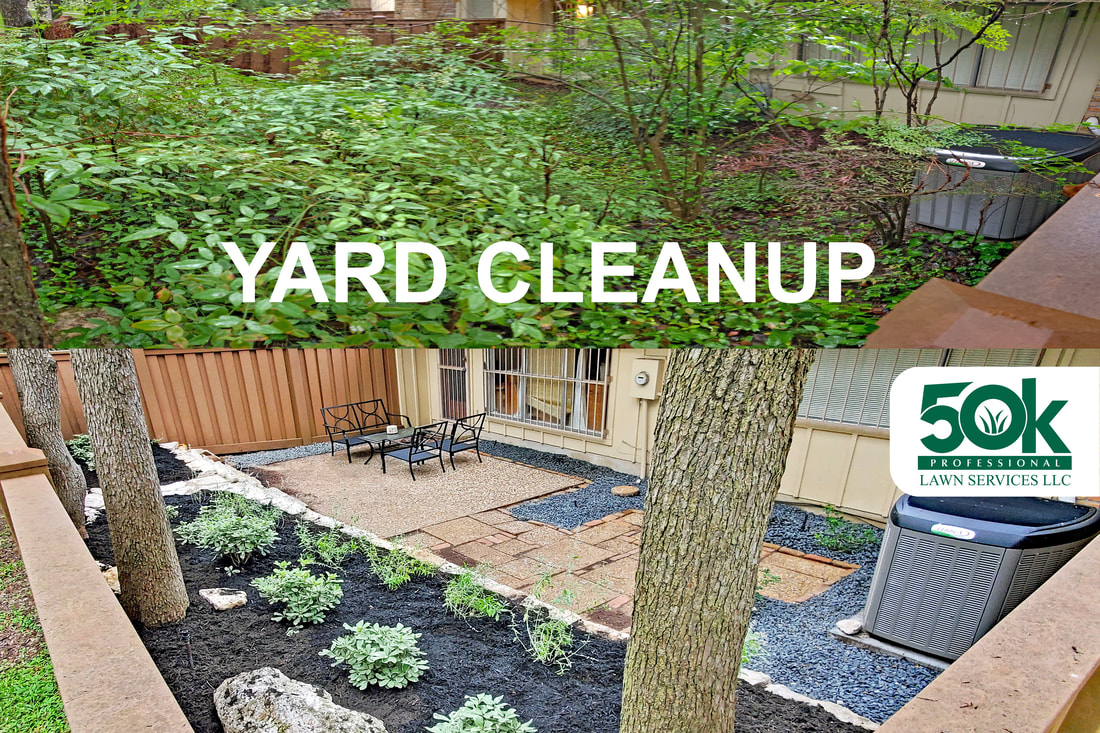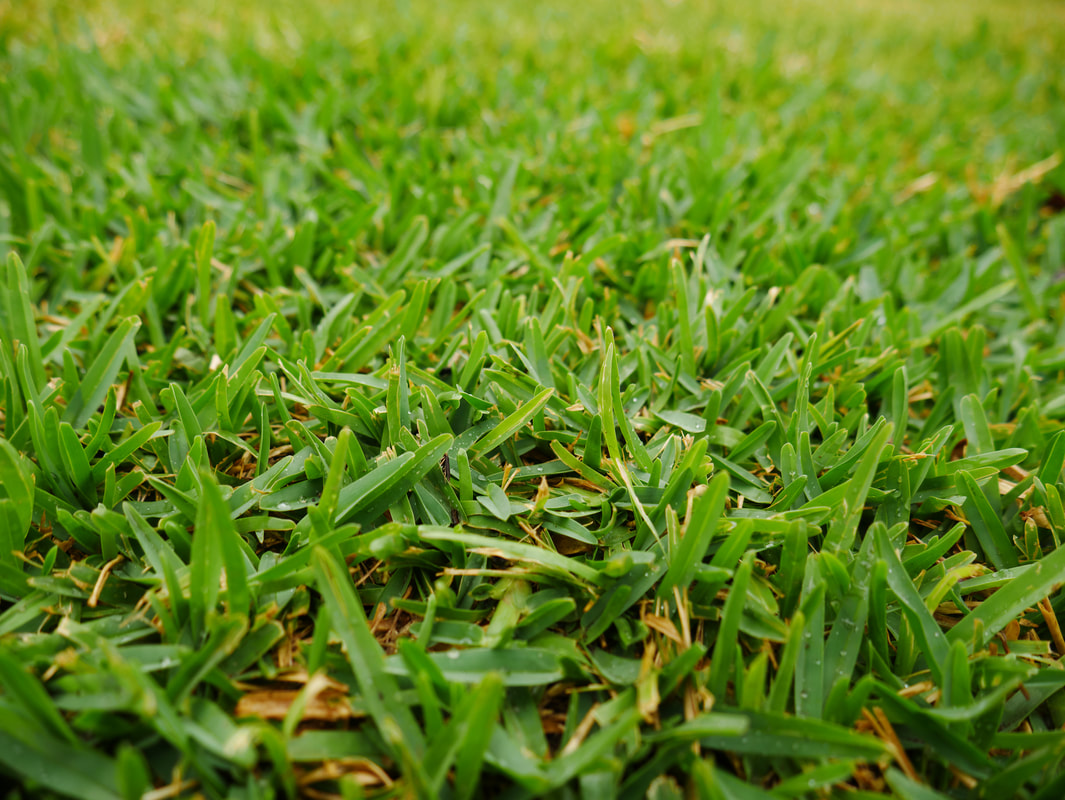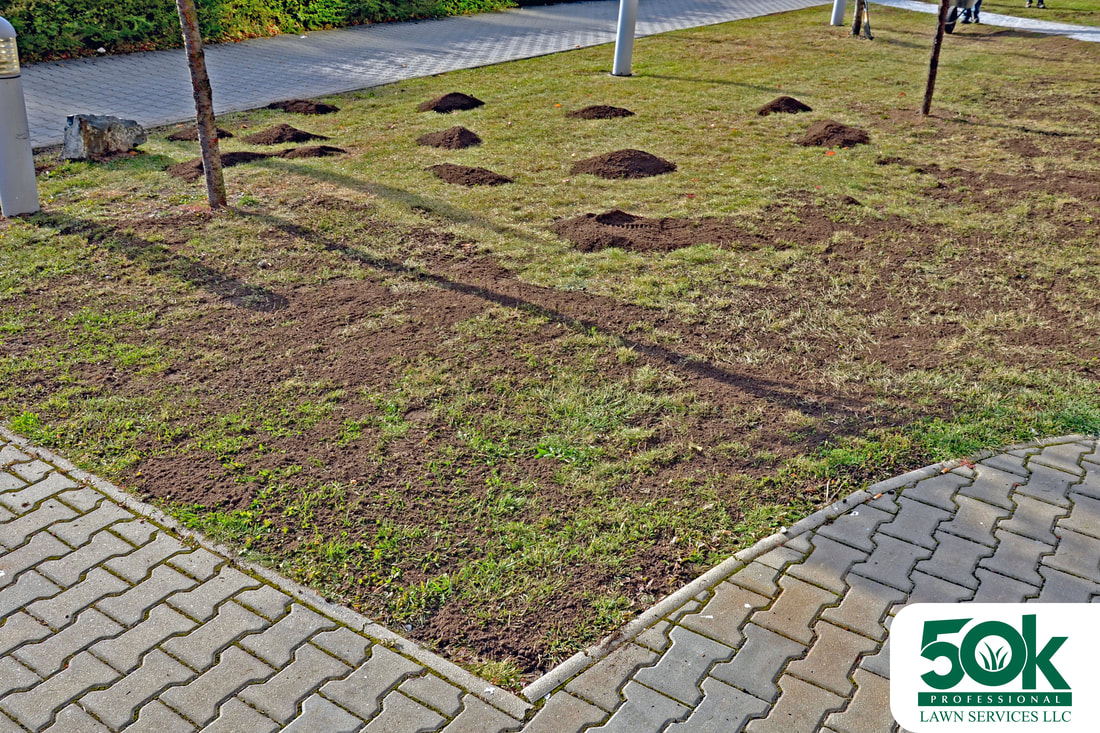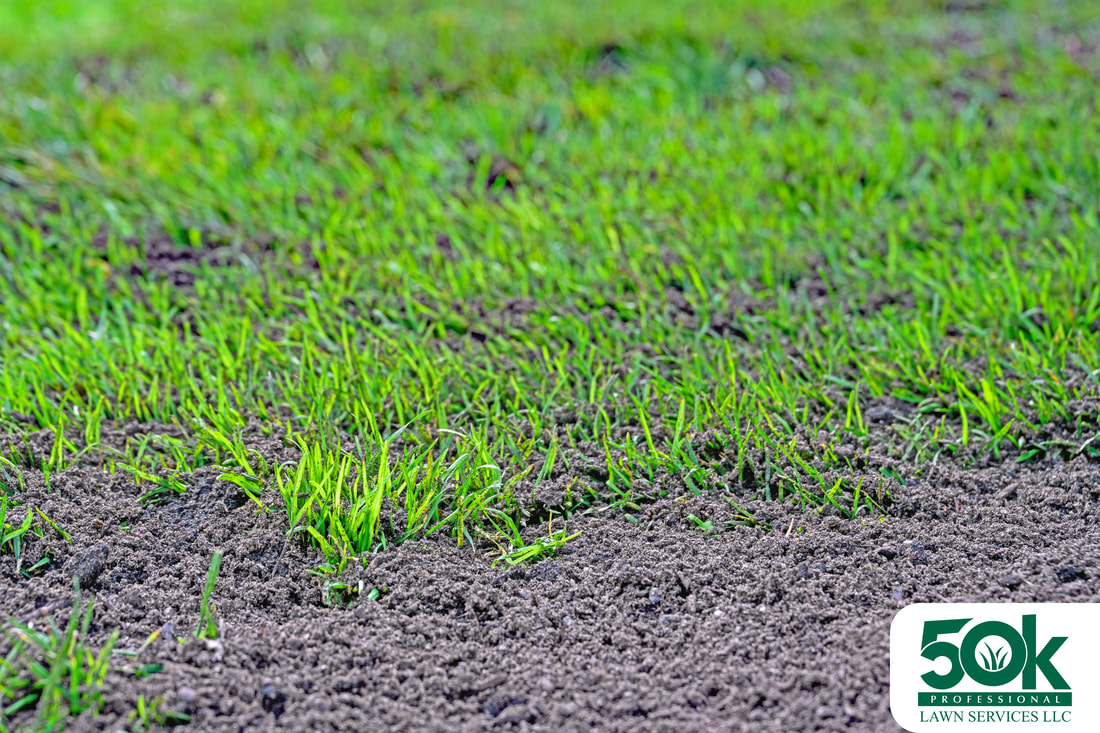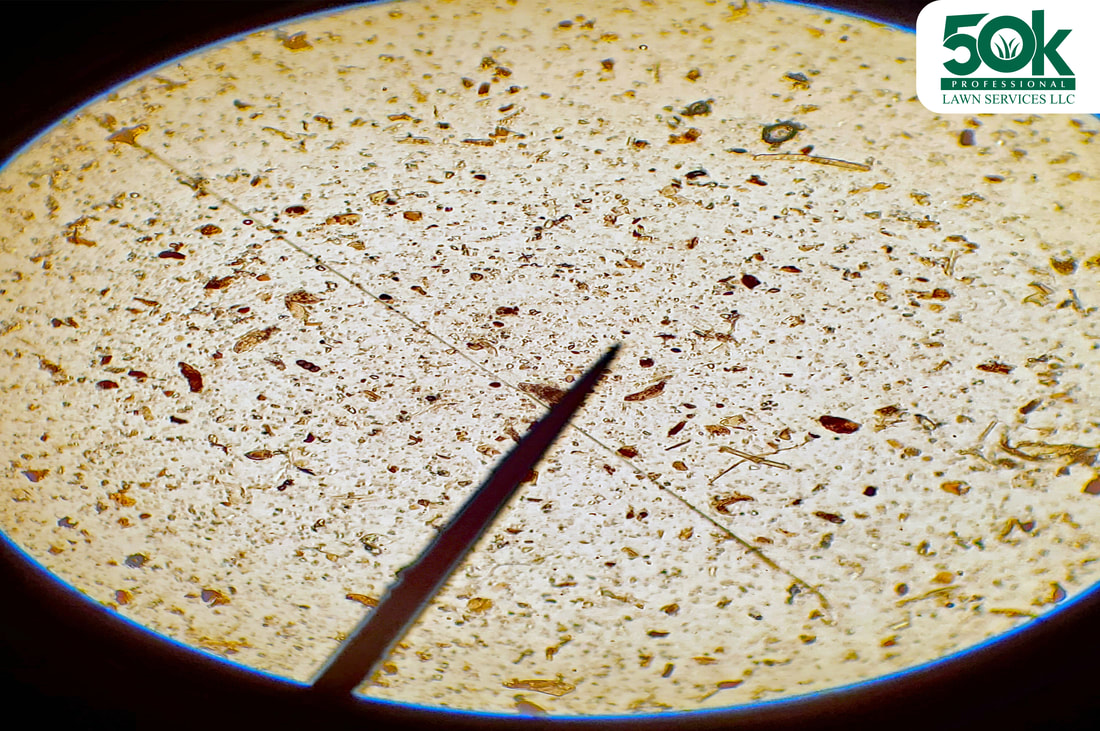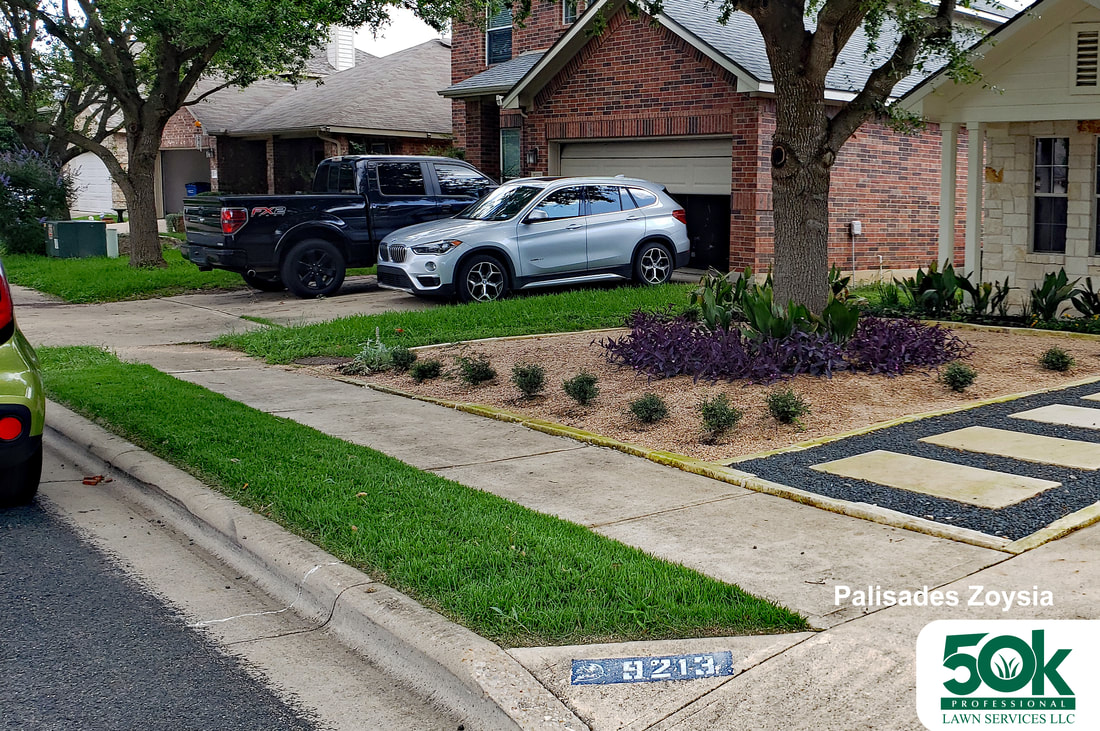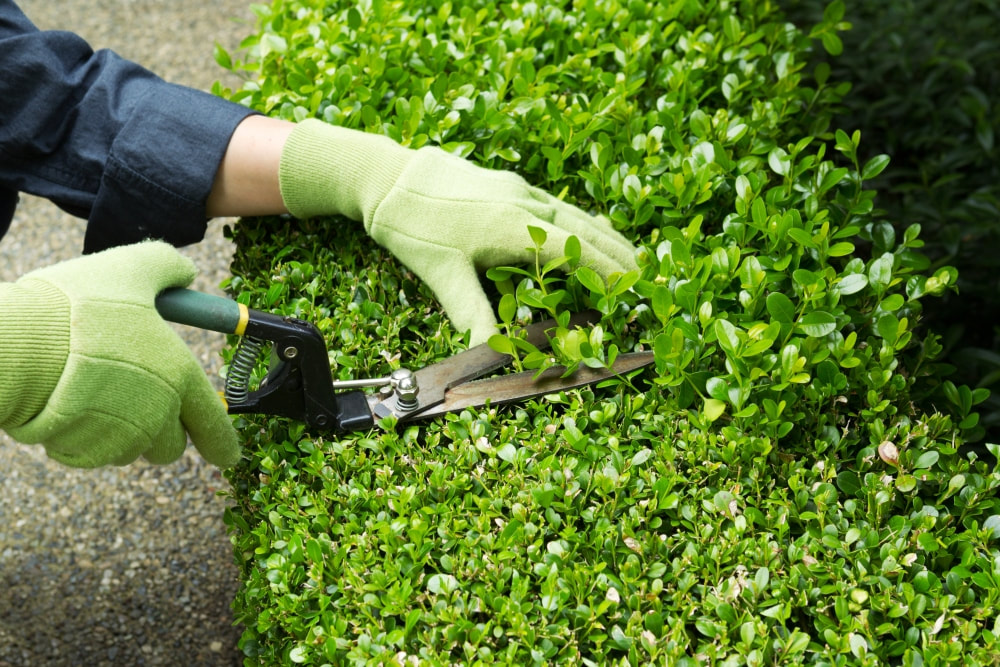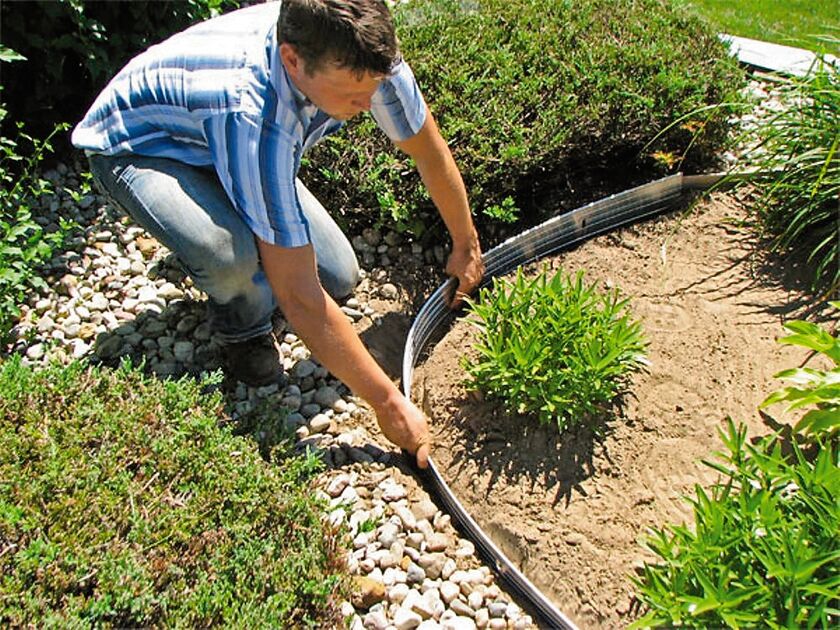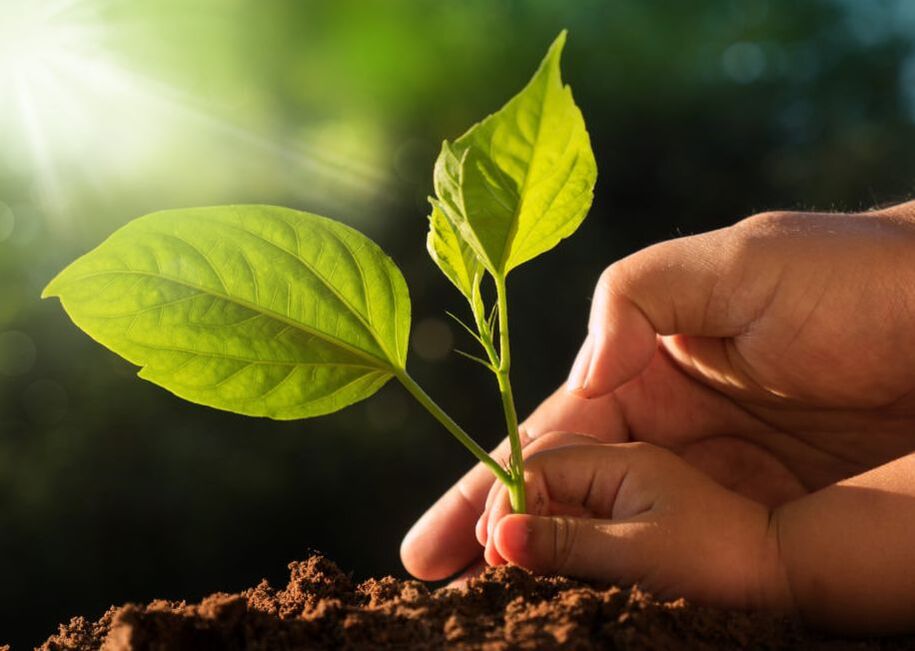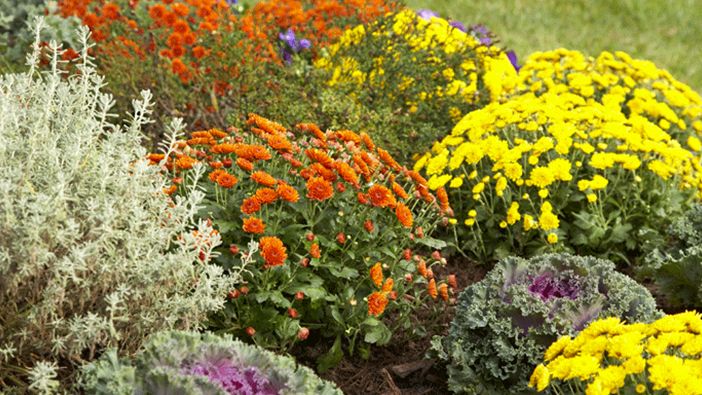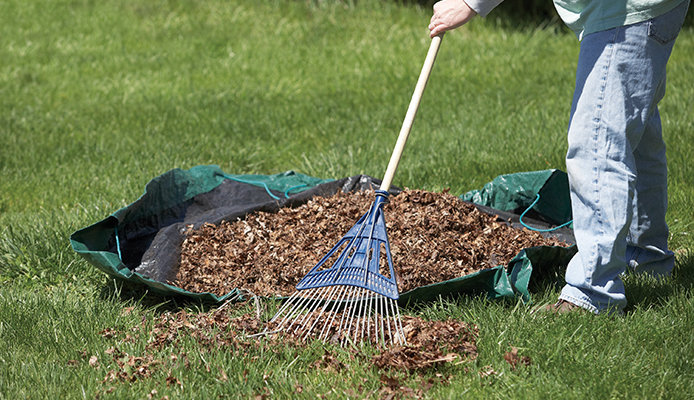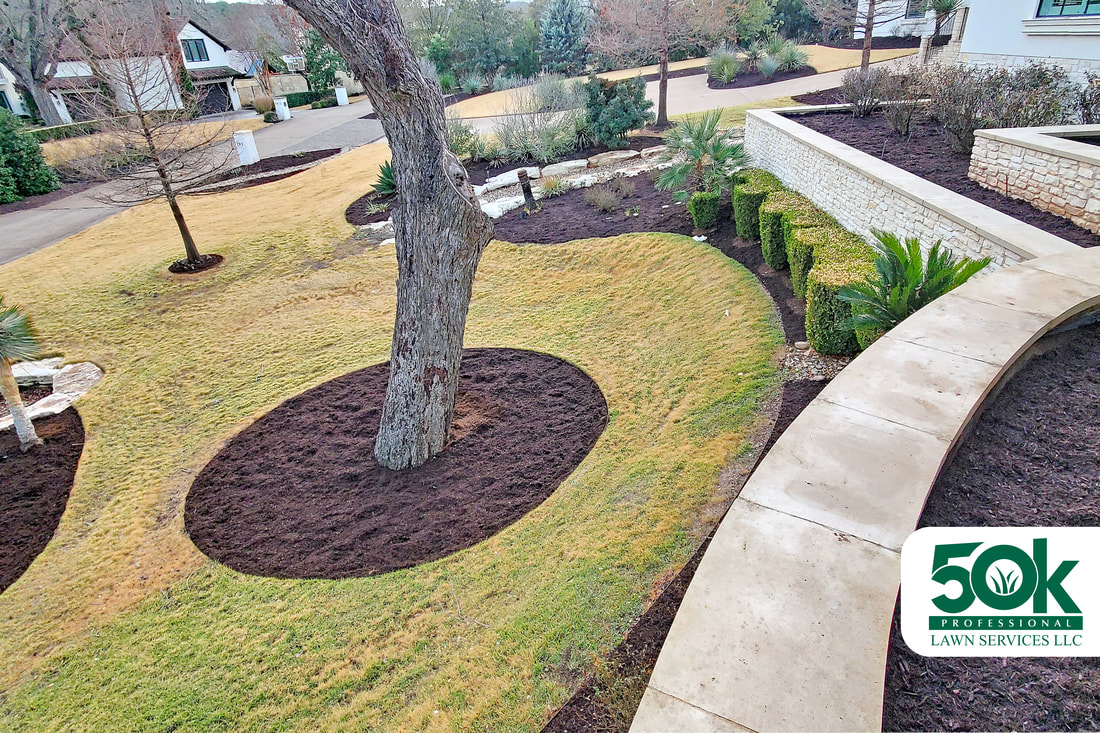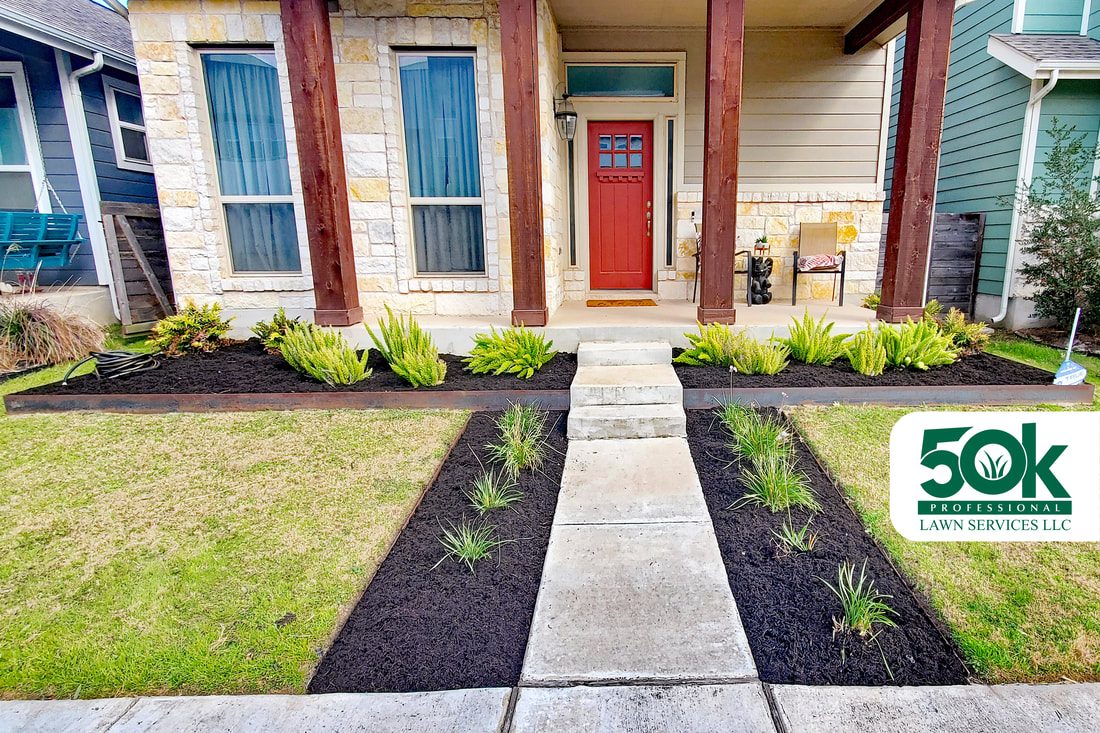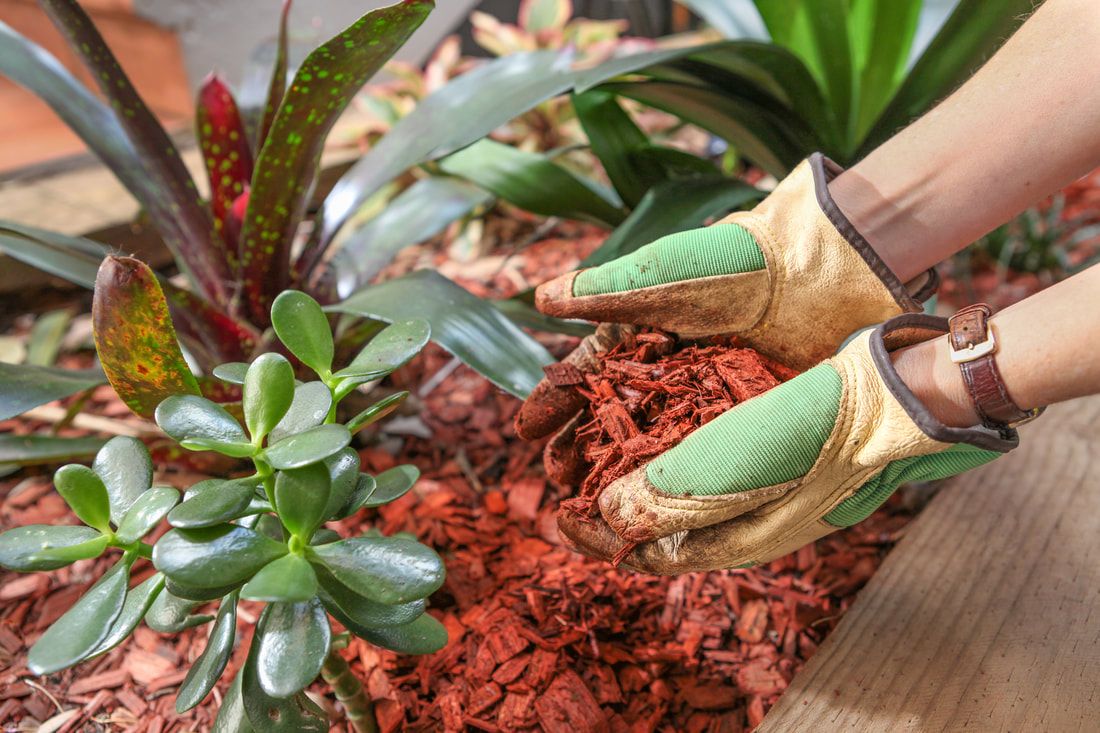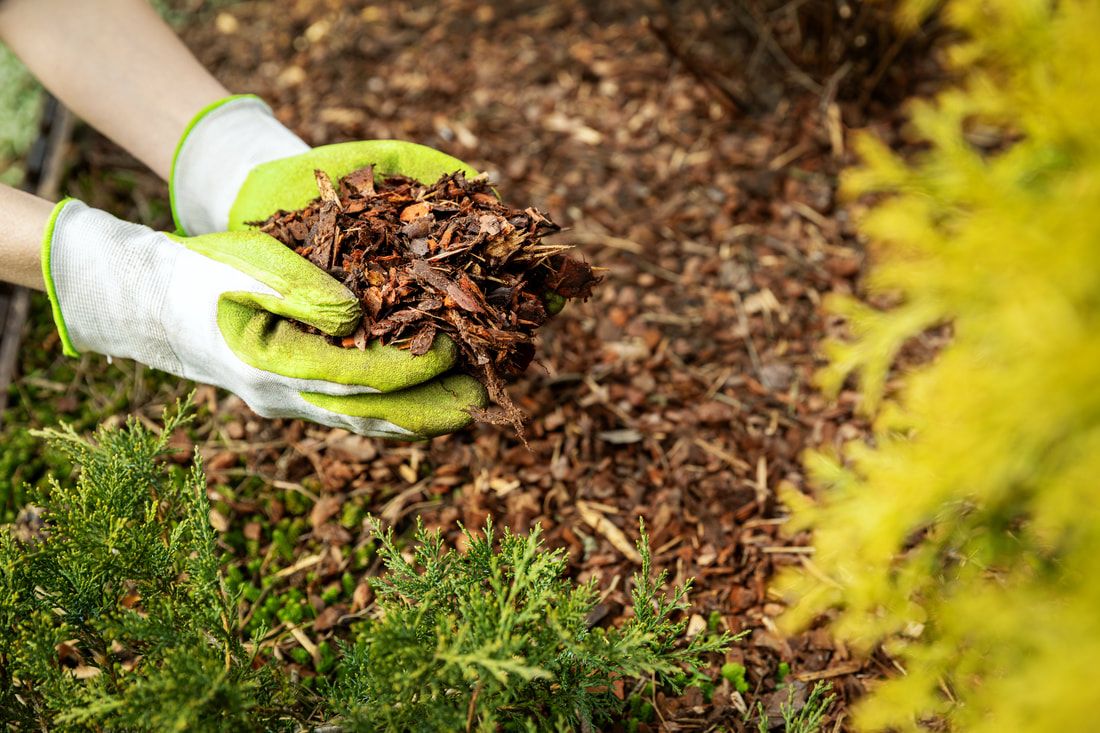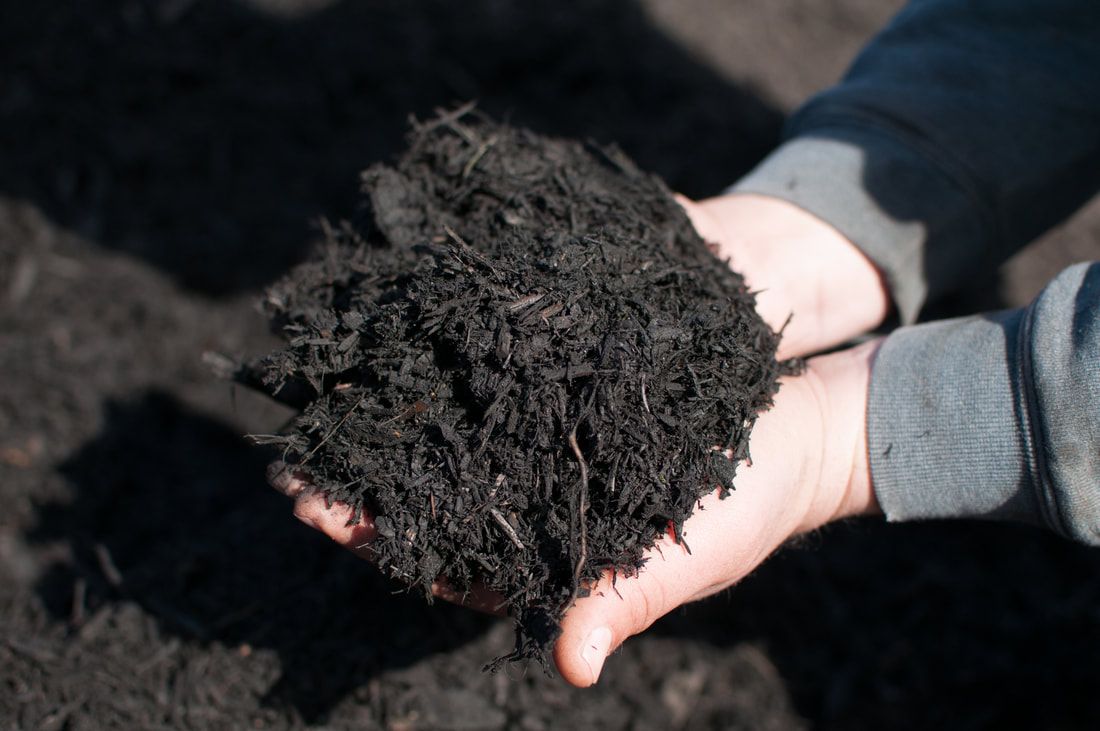|
The relationship between herbicide use, cancer, and organic lawn care is a complex and highly debated issue that has gained increasing attention in recent years. Herbicides, also known as weed killers, are chemicals used to control the growth of unwanted plants and weeds. They are widely used in agriculture, landscaping, and home gardens, but their use has been linked to numerous health and environmental risks, including an increased risk of cancer. In response, many people have turned to organic lawn care practices that aim to promote healthy soil and plants while minimizing the use of chemicals. Herbicides are designed to be toxic to certain plants and weeds, but they can also have harmful effects on human health and the environment. Some studies have suggested that exposure to certain herbicides may increase the risk of certain types of cancer, including non-Hodgkin's lymphoma, prostate cancer, and breast cancer. However, the evidence is not conclusive, and the relationship between herbicide use and cancer risk is still being studied. One of the challenges in understanding the relationship between herbicides and cancer is the difficulty in measuring exposure to these chemicals. Most studies rely on self-reported exposure to herbicides, which can be inaccurate. In addition, many herbicides are used in combination with other chemicals, making it difficult to determine the individual effects of each chemical. Furthermore, the effects of long-term exposure to low levels of herbicides are not well understood, and more research is needed in this area. Despite the uncertainty surrounding the relationship between herbicides and cancer, there is a growing concern about the negative health and environmental impacts of these chemicals. In addition to increasing cancer risk, herbicides can also harm beneficial insects, wildlife, and the overall ecosystem. They can contaminate water sources and soil, and they can also disrupt the balance of natural ecosystems. In response to these concerns, many people have turned to organic lawn care practices as a safer and more sustainable alternative to traditional herbicide use. Organic lawn care involves using natural methods to promote healthy soil and plants, such as composting, mulching, and using beneficial insects to control pests and weeds. These practices rely on a holistic approach to lawn care, focusing on soil health and plant nutrition, rather than relying on chemicals to control unwanted plants and pests. Organic lawn care is not only safer and more sustainable, but it can also result in a healthier and more attractive lawn. By using natural methods to promote soil health and plant growth, organic lawn care can lead to a more resilient and self-sustaining ecosystem. Furthermore, by avoiding the use of harmful chemicals, organic lawn care can help to protect the health of both people and the environment. In conclusion, the relationship between herbicide use, cancer, and organic lawn care is complex and multifaceted. While the evidence linking herbicides and cancer risk is not conclusive, there is growing concern about the negative health and environmental impacts of these chemicals. Organic lawn care offers a safer and more sustainable alternative, promoting healthy soil and plants while minimizing the use of harmful chemicals. By adopting organic lawn care practices, we can help to protect both human health and the environment, and create healthier and more sustainable communities.
1 Comment
Some red dyes may potentially have harmful chemicals that can leach into the soil and impact plant health.
What are potentially harmful chemicals from mulch dyed with red pigment that can leach into the soil and impact plant health? While there is no conclusive evidence that the red pigments used in mulch are harmful to plants or the environment, some concerns have been raised about the chemicals used to produce the red dye, which may include heavy metals, such as chromium, copper, and arsenic. These chemicals can potentially leach into the soil over time and accumulate to levels that can be harmful to plants and other living organisms in the soil. It's always a good practice to choose high-quality mulch from reputable sources and to use it according to the manufacturer's recommendations to minimize any potential negative impacts. How would I know if I already have heavy metals in my plant bed's soil? There are some types of insects that are known to tolerate or even thrive in soil with high levels of heavy metals. These insects have evolved mechanisms to detoxify or excrete these metals, allowing them to survive in otherwise toxic environments. Some examples include certain species of springtails, beetles, and earthworms. It's ultimately up to personal preference, but it's worth considering these factors before choosing to use dyed mulch. At 50k Professional Lawn Services LLC, we prefer to err on the side of caution and not expose ourselves to such chemicals. Afterall, at the end of the day, health ultimately is wealth. And we want to serve you and your family for many, many more years to come. Thinking of removing your yard waste but don’t know where to start? Worry no more! Your yard experts are here to help! Hauling of debris such as tree branches, firewood, unpainted wooden fences, dirt pile, brush, leaves, grass clippings, landscaping debris, yard trimmings, and other organic debris, is one of the most difficult and time consuming tasks around the lawn. It usually requires a team of two or more to complete this task, and would sometimes need an excavator depending on how much lawn debris to be removed. We help people like you in doing heavy tasks like this.
We dispose of these lawn debris responsibly and in an eco-friendly manner. We do our best to help our environment by recycling, repurposing, and reusing your lawn junk. For example, we recycle organic waste and use it as fertilizer. We have minimum load to full load hauling depending on the amount and weight of the debris. Aside from hauling your lawn debris, we also sweep up and vacuum to make sure there are no left overs. We dispose of your lawn junk to its respective recycling facility, donation box, or landfill. Hauling Service Options: Minimum Hauling Coverage: This covers labor to prepare, load, haul away, and proper disposal of bulk organic debris that won’t normally fit a 30-gallon bag. Average Service Time: 30 minutes. Half Load Hauling This covers labor to prepare, load, haul away, and proper disposal of bulk organic debris 350 cubic feet of up to 1 ton. Average Service Time: 80 minutes. Full Load Hauling This covers labor to prepare, load, haul away, and proper disposal of bulk organic debris 700 cubic feet of up to 2 tons. Average Service Time: 350 minutes. Here’s a simple guide if you would like to estimate the lawn debris on your own. Computation: L x W x H = cubic feet 5’ x 2’ x 6’ = 60 cubic feet or 2.22 cubic yards. 2.22 cubic yards is 1 and a quarter pallet or Half Load Hauling You may text us your lawn debris photos to (844) 505-5296 or ask us to do an onsite estimate for a more accurate quote. Our onsite estimate is absolutely FREE. You may call us from Mondays-Saturdays 7AM to 5PM (844) 505-5296 or you may also contact us via chat here on our website to set up an account and we’ll schedule the FREE onsite visit on the next earliest availability. Assessments during the onsite visit will then be forwarded to our office for review and final checking. For your convenience, the final estimate will be sent to you via email and text for your review and approval. Once approved, you may click on the "Review and Pay Deposit" button to approve the quotation and setup your automated billing. You may also opt out of automated billing by unchecking the "Save for future use" box, but we require prepayment on the onset of every relationship. For all quotations approved on or before Thursday will get scheduled within the week. Otherwise, all approved quotations beyond Thursday will get scheduled the following week. What is a Residential Groundskeeping Service?
Our Custom Residential Groundskeeping Service is a customizable service package based on your property’s specific needs. It could include recurring lawn mowing, leaf removal, weeding service, pet waste removal, fertilization, core aeration, top dressing, seasonal clean up, and other services our professionals may recommend. Who needs a Residential Groundskeeping Service? Austinites who need more than just lawn mowing. Austinites looking for all organic lawn care services. Austinites looking for an all in one service provider. Austinites looking to have a well maintained lawn. Austinites who want to have a monthly budget. Austinites wanting a flat monthly rate for all their services. Austinites who just bought a new home. Landlords in Austin maintaining their rental properties for their renters. Austin homeowners who live in another state or another country. Property managers looking for a worry-free all in one service provider for all the properties they manage in Austin. Why do you need it? You get all the services your property needs without breaking the bank. We could customize your services depending on your needs and budget. We spread your cost over the year, so you only have to make one flat payment every month. This way you can budget, and do not need to spend thousands of dollars upfront. There is absolutely NO LONG TERM CONTRACT. We assume the risk by giving you the option to cancel at any time for any reason. This way you keep us on our toes, and you only receive the best quality groundskeeping service money can buy in Austin, Texas. What's included? On top of our organic lawn care service subscription, our groundskeeping services covers:
How to start a Custom Residential Groundskeeping Service? Send us an estimate request by filling out our estimate request form. We will schedule your property for a FREE onsite visit within 24 hours or on your preferred date and time - with a 3-hour arrival window. After the onsite visit, our estimator will send the Custom Groundskeeping Service estimate to you via email and text for your review and approval. To approve the quote, simply click on the “View Quote'' button and hit the “Approve Quote” button. That's it! You are all set for your recurring Groundskeeping Service. All approved quotations on or before Thursday will be scheduled within the week, and all approved quotations after Thursday will be scheduled the following week. After Service? We are not satisfied until you are satisfied. Before and after photos are sent via email within 24 business hours after the service for your review and honest feedback. Invoices are sent on the last day of the month. Should you have any questions or concerns about the service provided, you may send us an email, chat with us, or call us Monday-Saturday, 7AM-7PM. Are you looking to sell your home or move to a new one in Austin? Redfin is a full-service real estate broker. Selling your home and finding a new home just got easier. You may schedule a free consultation with their expert local agents without any pressure or obligation. Talk to a Redfin Agent now! It has been a while since our last blog update. We have been very busy serving many of our existing and new clients and at the same time fixing everything in the back end. This year, we mainly focused on improving our online bulk mulch delivery service. Delivery has now been expanded throughout the city of Austin and neighboring cities by popular demand. Despite the rising cost of doing business, we are maintaining our FREE delivery within Austin and a nominal fee for neighboring cities. In line with this, we improved our ability to handle large orders, upwards of 50 yards, especially for commercial properties and large homes. Service scheduling currently stands at 90% on-time delivery (within the day of original schedule) for the past 6 months. We are very proud of this achievement. This resulted in expedited service that lessened property down time, greatly improved service quality, and lowered overall service price. We would say that the totality of our mulch installation and delivery service is a culmination of 7 years of industry experience and 6 months of hyperfocus to make the mulch numbers work! There are more updates coming very soon this year! Thank you for trusting us, Austin! Serving you with Love since 2015.
Before installing sod over existing dead grass, it's important to first remove the dead grass and prepare the soil. Here are the steps you can follow:
The time it takes for sod to take root and establish largely depends on the temperature conditions and other factors that influence grass growth. Generally, it takes 2 to 3 weeks for sod to fully take hold and establish roots in optimal growing conditions, but this can vary based on factors such as temperature, moisture levels, and soil quality.
Temperature is a key factor in grass growth, as it affects the rate at which the roots and blades of the grass grow. In cooler temperatures, grass growth slows down, which can lead to slower root establishment and a longer time for the sod to take. In contrast, warm temperatures can promote faster growth and quicker root establishment. Typically, the optimal temperature range for grass growth is between 60 and 75 degrees Fahrenheit. In addition to temperature, moisture levels also play an important role in sod establishment. Sod needs to be kept consistently moist in order to establish roots and avoid drying out, but over-watering can lead to other problems like fungal growth. It's important to balance the frequency and duration of watering based on the temperature and other environmental conditions to avoid over- or under-watering. Soil quality also affects the time it takes for sod to take root and establish. Healthy soil with good structure, nutrients, and drainage promotes healthy root growth and can speed up the process of sod establishment. Poor soil quality, on the other hand, can lead to slower root establishment and can even cause the sod to fail to take. In summary, the time it takes for sod to take root and establish can vary based on several factors, including temperature, moisture levels, and soil quality. In optimal growing conditions, it typically takes 2 to 3 weeks for the sod to fully take hold, but it's important to monitor and adjust watering and other environmental factors to promote healthy root growth and establish a strong, healthy lawn. When addressing waterlogged areas in your lawn and landscaping, it is essential to understand the factors that contribute to soil water retention and how to manipulate these factors to improve drainage. SOIL Soil is a complex, dynamic, and living ecosystem that serves as the foundation for plant growth and plays a crucial role in supporting life on Earth. It consists of a mixture of organic and inorganic materials, including minerals, organic matter, water, air, and a diverse array of microorganisms. Understanding the various components of soil and their interactions is essential for maintaining and improving soil health, fertility, and productivity. Soil is composed of three main components: sand, silt, and clay. The proportions of these components in your soil, known as soil texture, greatly influence the soil's ability to drain water. Clay soils tend to retain more water, while sandy soils drain more quickly. To improve drainage in your lawn, you may need to amend the soil with organic matter, such as compost, or add sand to alter the soil texture and promote better drainage. Soil Components
Soil Microorganisms
If you studied soil in the 80's, 90's, and possibly 2000's, soil stops at soil composition. In 2010's to this very day in 2023, Soil microorganisms, including bacteria, fungi, algae, protozoa, and nematodes, are integral part for maintaining soil health and fertility. Soil Microorganisms contribute to the decomposition of organic matter, nutrient cycling, soil structure formation (the sand, silt, and clay particles as previously discussed), and suppression of soil-borne diseases. Some microorganisms form symbiotic relationships with plants, such as mycorrhizal fungi, which enhance nutrient uptake and improve plant stress tolerance.
ORGANIC MATTER Organic matter not only improves soil structure but also fosters a diverse and healthy population of microorganisms. These microorganisms, in turn, help to break down organic material into humus, a vital component of healthy soil that further enhances water retention and drainage capabilities. Organic matter plays a crucial role in maintaining and improving soil health, fertility, and productivity. It consists of a wide variety of materials in various stages of decomposition, including plant and animal residues, living organisms, and humus, which is a stable, dark-colored material resulting from the breakdown of organic matter by microorganisms. The presence of organic matter in the soil provides numerous benefits, which can be discussed in greater detail:
TOPOGRAPHY When addressing drainage issues in your lawn, it is also essential to pay attention to the lawn's topography. Topography is the study of the Earth's surface features, including its relief (variations in elevation), slopes, and landforms. In the context of landscaping, agriculture, lawn propagation, topography plays a significant role in determining the suitability of land for various purposes, affecting factors such as water drainage, erosion, microclimates, and soil development. A thorough understanding of topography is essential for making informed decisions:
DRAINAGE SOLUTIONS In addition to amending the soil and adjusting the lawn's topography, you may consider implementing natural drainage solutions such as rain gardens or swales. Rain gardens are shallow depressions filled with water-tolerant plants that can absorb excess water, while swales are gently sloping ditches designed to guide water away from problem areas. Drainage is a crucial aspect of lawn and landscaping, as it involves the removal of excess water from the soil surface and the root zone to maintain optimal soil moisture and prevent waterlogging. Proper drainage is essential for the health of plants and the overall stability of the landscape. Engineering principles play a significant role in designing effective drainage systems and integrating them seamlessly into the landscape.
Lastly, it is crucial to adopt proper watering practices for your lawn and landsacping. Deep, infrequent watering encourages the development of a robust root system, which increases the grass's resilience during drought periods. Monitoring the weather, adjusting your watering frequency, and considering your soil type are all essential factors in developing a sustainable, environmentally friendly lawn care routine that avoids overwatering and promotes healthy grass growth. How often? Short answer: daily until moist for 21-30 days. If it is cold outside and the sod is already moist, do not water. If the sod has not taken because it is too cold outside, just wait until the weather warms up. Sod grass will remain dormant until the right weather comes up. Long Answer? It depends... you opened a can of worms. In Austin, Texas, newly installed grass sods require an appropriate watering regimen that takes into account scientific principles and age-old techniques to ensure the health and longevity of the sod. Here we will discuss the science behind these watering techniques and explore some traditional methods used to establish healthy lawns. Soil Moisture
In summary, soil moisture is an essential aspect of organic lawn care from a scientific perspective. By maintaining optimal soil moisture levels, you can promote healthy grass growth, support beneficial soil microbial activity, maintain proper soil structure and aeration, ensure nutrient availability and uptake, encourage organic matter decomposition, and prevent drought stress. Monitoring and adjusting soil moisture levels according to your lawn's specific needs will contribute to a more sustainable and healthier lawn ecosystem. Evapotranspiration
Evapotranspiration (ET) is the process through which water evaporates from the soil surface and transpires through plant leaves. In hot and dry climates like Austin, Texas, evapotranspiration rates are high, necessitating frequent watering during the initial establishment period. Utilizing local evapotranspiration data can help determine the appropriate watering amounts and frequency for the specific climate. Evapotranspiration is a vital concept in understanding water dynamics and management in lawns and landscapes. It refers to the combined process of evaporation and transpiration, which are the two primary ways water is lost from the soil and plants.
Several factors influence the rate of evapotranspiration in a lawn, including:
Plant Physiology Understanding the physiological needs of grass species is crucial for successful sod establishment. Different grass species have varying root depths and water requirements. For instance, warm-season grasses such as Bermuda grass have deeper roots and can tolerate drought better than cool-season grasses like Kentucky bluegrass. Thus, knowing the specific grass species used in the sod will inform watering practices. Plant physiology plays a significant role in the growth and adaptation of warm-season grasses like Zoysia, Bermuda, St. Augustine, and Buffalo grasses. These grasses are well-suited for warm climates and have distinct physiological characteristics that enable them to thrive in high temperatures and exhibit drought tolerance.
Water Infiltration Rate The water infiltration rate is the speed at which water moves through the soil. It is influenced by soil texture, structure, and organic matter content. Sandy soils have higher infiltration rates and require more frequent watering, whereas clay soils have lower infiltration rates and can hold moisture for a longer period. Understanding the soil type in your lawn will help determine the appropriate watering schedule. Water infiltration is the process by which water enters the soil from the surface and moves downward through the soil profile. It is a key factor in maintaining healthy soil, promoting plant growth, and preventing issues such as runoff, erosion, and waterlogging. Understanding the science behind water infiltration rates can help optimize irrigation practices and improve the overall health of your lawn or landscape. Several factors influence water infiltration rates:
Traditional Techniques Age-old techniques such as the "finger test" in the southern United States can help assess soil moisture levels. By inserting a finger into the soil, you can determine if the soil is adequately moist or if additional watering is needed. This simple technique can be a useful tool for monitoring soil moisture and adjusting the watering schedule accordingly. Throughout history, traditional techniques have been employed in agriculture, lawn, and landscaping to manage water infiltration and irrigation. Many ancient civilizations, including Egypt, China, and the indigenous peoples of America, developed sophisticated systems for water management and irrigation.
Water Conservation Practices Traditional water conservation practices, such as capturing rainwater in barrels or using drip irrigation systems, can help ensure efficient watering while reducing overall water consumption. These techniques not only benefit the environment but also promote deep root growth and healthy lawns. Water conservation is essential when propagating grass, especially in areas prone to drought or where water resources are scarce. By using a combination of scientific methods, proven methodologies, and age-old practices, you can conserve water while promoting healthy grass growth. Here are some water conservation practices to consider:
In conclusion, a successful watering regimen for newly installed grass sods in Austin, Texas, should consider scientific principles such as soil moisture, evapotranspiration, plant physiology, and water infiltration rates, as well as age-old techniques and water conservation practices. By understanding these factors and adjusting the watering schedule accordingly, you can promote deep root growth, ensure the health of the sod, and conserve valuable water resources. BACKGROUND: THIS SECTION COVERS BASIC KNOWLEDGE ABOUT EVERYTHING YOU NEED TO KNOW ABOUT ORGANIC LAWN CARE. What is Organic Lawn Care? Organic lawn care is about turning away from the use of conventional chemicals. A more sustainable approach like how farmers used on crops in the years past. Organic lawn care centers around the health of the soil. When the soil is healthy, you get to have healthy plants too. A healthy soil absorbs more moisture and requires less watering. That means switching to organic lawn care is in fact a cost effective alternative. Organic lawns resist pests, prolonged drought, and outgrow weeds. Organic Lawn Care includes: Organic Fertilizer Organic fertilizer made from rock minerals, organic plant, and animal matter. This combination of organic matter adds nutrients into the soil as it decomposes. The length of the decomposition process depends on ground temperature and weather. Warmer weather accelerates the decomposition process while cooler weather prolongs it. This process expands and contracts organic matter. Releasing nutrients absorbed by grass, plants, and trees. That, in turn, improves soil structure and texture. Topsoil Topsoil not only adds nutrients, oxygen to plant roots, and beneficial microbes. This is essential when transitioning to organic lawn care. Topsoil contributes to lawn health by creating aerobic condition that improves drainage. By making the soil more porous, air is able to reach the root system easier. This lessens anaerobic condition, a particular symptoms of which is muddy areas. Anaerobic muddy areas accelerates unwanted soil erosion. Topsoil is also used for minor re-levelling/correction of the lawn. In sports fields, topsoil is the best amendment to flatten the field. It bonds to the existing soil much better than sand. That is the number one mistake we notice when dealing with construction companies. They deal with lawn like they deal with foundations. They are not the same. Sand will not bond to the existing soil, ever - well, yes, if Dr. Elaine Ingham is advising them. But then again, that is a big if. Almost always, construction companies will use sand to fill in holes only for the sand to erode after a rain. That said, if filling holes is the problem, topsoil is the solution. Compost Compost is the unprocessed topsoil. A compost has chunks of yet-to-be-decomposed organic matter. Compost is moist and very warm to touch when alive. If packaged in a bag for a prolonged period of time, the microbes in the compost can die, be dry and dusty. An good compost has beneficial microbes: bacteria, algae, fungi, and nematodes. These microbes help keep the soil healthy. Adding compost to your lawn helps nourish the soil. We generally recommend adding compost as a top dress as a cost-effective way to amend the soil. It is cheaper than topsoil at a ratio of $1:$2. While it is not as flat as a topsoil, compost generally flattens as it decomposes. Compost becomes topsoil when given enough time to decompose. This decomposition process again increases beneficial microbial activity in the soil. When the soil is rich in microbial life, this means less fertilizing and watering. Actively Aerated Compost Tea Aerated Compost Tea helps speed up the lawn's transition to organic lawn care. A compost tea contains beneficial microorganisms that produces 12 bioavailable nutrients: Nitrogen, Phosphorus/Phosphate, Calcium, Iron, Soluble Potash, Magnesium, Sulfur, Copper, Manganese, Molybdenum, Sodium, and Zinc. These water-soluble nutrients are immediately available contributing to the lawn's growth and reproduction. For that matter, any plant's health. Organic Mulch Organic mulch includes wood chips, bark, straw, leaves, and other organic matter. Organic mulch is the unprocessed compost. That said, organic mulch also has beneficial microbes. It retains moisture and can be very hot to touch. As you can see, these two observations are a telltale sign of a good organic product. Organic mulches suppress weeds on plant beds. On lawns, we use mulch on anaerobic areas to provide root protection in high traffic areas. They add organic matter to the soil and prevent soil compaction. In residential setting, mulch is the best-bang-for-the-buck to increase curb appeal. Organic Weed Control Most households use weed killers as part of their lawn care regiment. This has become the de-facto practice after World War 2. The time when companies repurposed war-time chemicals to household use. The threat to health of these chemicals poses is becoming mainstream. Every year, a growing number of households in Austin are switching to organic lawn care. Organic lawn care is a system that accepts minor imperfection in grass propagation. This is a healthy balance in the real world. Organic weed control is not about treating weeds. It is about prevention and weed management. We tolerate imperfections. This philosophy is known as Integrated Pest Management (IPM) according to The Spruce. Core Aeration and Dethatching Thatch is an accumulated layer of organic matter on a lawn. Composed of grass roots, crowns, stolon, rhizomes, and organic matter. Thatch buildup slows down when the soil have beneficial microorganisms. When beneficial microorganism is at its lowest, thatch builds up occurs. This happens when using synthetic nitrates. Synthetic nitrates, in concentrate form, do not exist in the real world. Because of this, microorganism dies upon contact. As a result, the thatch layer fails to decompose and builds up. Generally, a thatch layer of about 1/2-inch thick is acceptable. It allows water, nutrients, and air to penetrate into the soil. At acceptable thickness, we use core aeration to pull soil plugs from the lawn. These plugs aid the decomposition process. The plug holes in the soil increase air and water penetration. When the thatch is layer is thicker, it blocks water, air, and nutrients from reaching the soil. In this case, a dethatching pulls the excess thatch layer. This process is stressful for the lawn. We avoid this as much as possible through the use of less invasive methods of soil correction. Because dethatching pulls the thatch layer, it damages the lawn, creating bald areas. Proper Lawn Mowing Proper lawn mowing is essential to organic lawn care. Lawn mowing prevents weeds and diseases. We mow organic lawns higher following the one-third cardinal rule of mowing. This keeps the grass longer and lessens unwanted seed germination. It also keeps the soil moist and cooler. The grass' growth potential depends on the season. In Spring and Fall, grass grows the fastest and requires frequent mowing. Whereas in Summer and Winter, the grass grows at a much slower pace that requires less mowing. But then again, weather is unpredictable. The grass will grow as long as the outdoor temperature is above 60F even in Summer and Winter. That said, these are highly generalized rule of thumb we are discussing here. How to know if a lawn is healthy? A healthy lawn must have healthy soil. Healthy soil can be best described as something that is moist to the touch even when not irrigated. This supports the development of a healthy grass. A healthy soil resists weeds and pests. Diseases and pest problems are very rare in a healthy soil. For example, it is very hard for fairy rings and brown patches to propagate in organic soil. The ecosystem for uncontrolled fungal growth does not exist in organic lawn care. The majority of lawn care companies use synthetic chemicals. These harsh, even toxic, chemicals work directly on the grass blade. The approach is to pump in as much nitrates as the grass can take. This turns the grass greener much faster, but also killing them in the process. It is like an addiction of excess nitrogen. The nitrates in synthetic fertilizer kill microbes that convert organic matter to nutrients. This depletes soil fertility in the long term. That as a result increases reliance on synthetic fertilizers to remain green. A genius-level business model. How to know if a lawn is healthy? A healthy lawn must have healthy soil. Healthy soil can be best described as something that is moist to the touch even when not irrigated. This supports the development of a healthy grass. A healthy soil resists weeds and pests. Diseases and pest problems are very rare in a healthy soil. For example, it is very hard for fairy rings and brown patches to propagate in organic soil. The ecosystem for uncontrolled fungal growth does not exist in organic lawn care. The majority of lawn care companies use synthetic chemicals. These harsh, even toxic, chemicals work directly on the grass blade. The approach is to pump in as much nitrates as the grass can take. This turns the grass greener much faster, but also killing them in the process. It is like an addiction of excess nitrogen. The nitrates in synthetic fertilizer kill microbes that convert organic matter to nutrients. This depletes soil fertility in the long term. That as a result increases reliance on synthetic fertilizers to remain green. A genius-level business model. Why Switch to Organic Lawn Care? Conventional lawn chemicals are a health and environmental hazard. It pollutes our water and has adverse effects not only to us but also to our pets. A study from Purdue University found adverse association between cancer and dogs. Chemically-treated lawns increased bladder cancer risk in Scottish Terriers four to seven times. This discovery prompts new information about carcinogens in lawn treatments. According to the research done by Lawrence T. Glickman, a professor of epidemiology and environmental medicine in Purdue's School of Veterinary Medicine, and other veterinary researchers, "they have discovered a relationship between risk of transitional cell carcinoma of the urinary bladder in Scottish terriers and the canines' exposure to synthetic compounds found in chemical-based yard treatments." Glickman said, "the danger of transitional cell carcinoma was observed to be somewhere in the range of four and seven times more apparent in exposed animals." They are working on finding the similarity between human and dog genomes. Canine and human genomes could be the key for researchers to find the gene in humans that makes them vulnerable to developing bladder cancer. How many humans and canines are affected? According to Centers for Disease Control and Prevention, about 56,000 men and 17,500 women get bladder cancer, and about 12,000 men and 4,700 women die from the disease. According to American Kennel Club, bladder cancer in dogs is relatively rare, about 1-2% of all canine cancers. However, it appears to be on the rise as more than 50,000 dogs get affected every year. AKC listed the breeds that have the highest risk according to veterinarians: Scottish Terriers West Highland White Terrier Beagle Shetland Sheepdog Wire Fox Terrier American Eskimo Dog Other breeds that could also be at risk: Australian Cattle Dog Australian Shepherd Bichon Frise Border Collie Parson Russell Terrier Lhasa Apso Rat Terrier Russel Terrier Environmental Impact Conventional chemical-based lawn care also impacts our environment. Chemical-based treatments contribute to environmental pollution with excess phosphorus and nitrogen runoff. The nitrogen runoff is suspected to have caused excessive algal blooms. According to The European Physical Journal, "the increasing use of fertilizers in agricultural fields causes more rapid algal growth." They also affect the number of pollinators too. These chemicals tend to reduce the number of flowering plants which results to the amount of food available for native pollinators declining. Chemical-based lawn care has harmful effects to humans, animals, and the environment. The question now is, what is in chemical-based treatments and why are they harmful? Here is a list of the most commonly used lawn pesticides: Herbicides: 2,4-D Benfluralin Clopyralid Dicamba Diquat Dibromide Dithiopyr Fluazipop-p-butyl Glyphosate Imazapyr Isoxaben MCPA Mecoprop (MCPP) Pelargonic Acid Pendimethalin Triclopyr Trifluralin Insecticides Acephate Bifenthrin Carbaryl Fipronil Imidacloprid Malathion Permethrin Trichlorfon Fungicides Azoxystrobin Myclobutanil Propiconazole Sulfur Thiophanate methyl Ziram The most widely used on lawns are glyphosate, dicamba, mecoprop (MCPP), pendimethalin, pelargonic acid, and trifluralin. Glyphosate is one of the most used herbicides in the United States and has been classified by The International Agency for Research on Cancer as carcinogenic. Glyphosate is seriously harmful that it could disrupt the endocrine and reproductive systems. Another most used pesticide is imidacloprid. It is part of the neonics (Neonicotinoid class). Neonicotinoid pesticides have contributed a lot in putting the bee population at risk of being extinct. These chemicals put all of us at risk. That is why we chose not to be part of the chemical spraying industry. Water pollution is a serious problem. And these pesticides, herbicides, and synthetic fertilizers are contributing to this problem. It is now in your hands as the consumer to vote with your wallet. To the betterment of the environment, wildlife, and human health, you can put an end to the use of toxic chemicals. Start with your lawn. 3 Main Advantages of Organic Lawn Care 1. Healthier lawn - organically grown lawns are healthier than chemically treated lawns. Chemically treated lawns are not able to naturally fight pests and diseases, and are vulnerable to drought. This is because chemical treatments like synthetic fertilizers only feed the plant and not the soil. In the long run, the ecosystem of the soil will be harmed, roots will become weak and shallow making them dependent on the next treatment. The effects of synthetic fertilizers are almost instant that they end up burning your lawn due to quick release of nitrogen causing microorganism use up most of the available nutrients for them, and when they finish all the food, they crash down. This will result to poor soil structure 2. Healthier environment - without the use of chemicals on your lawn, wild lands and water sources near you will be saved from the major source of water pollution, chemical runoff. Chemical runoffs happen because chemically treated lawns require more water and fertilizer due to poor soil structure and less organic matter in the soil. People can limit runoff pollution in many ways. One way of doing so is by reducing the amount of synthetic fertilizers. 3. Healthier YOU - organophosphates are the most used insecticides in agriculture, homes, gardens, and veterinary practice. According to CDC, these human-made chemicals can poison living organisms, insects, and people. A study done by CDC, organophosphates insecticides and their breakdown products known as metabolites were analyzed in urine samples from participants in the Churchill County leukemia. These metabolites are not toxic but exposure to organophosphate compound occurred few days before the test was done. Keeping away from industrial pesticides could save you and your loved ones as exposure to organophosphates is extremely poisonous. Disadvantages of Organic Lawn Care 1. It takes patience and consistency if you are eager to see its results. It will not give you an immediate result unlike when using chemical based treatments that gives an almost instant result due to strong and harsh ingredients in it. 2. It may cost you more initially when switching from conventional to organic lawn care as it is essential for your lawn to detox. More labor and maintenance is needed to help your lawn recover from chemical based treatments. In the long run, when your lawn is established, it will require less water, fertilizer, and maintenance. 3. It may be time consuming to apply organic lawn care products as they are often applied by hand. 4. An increased risk of weeds is possible as there is currently no organic weed control products in the market that is proven to be effective. U.S. Organic industry is undeniably growing. According to Economic Research Service U.S. Department of Agriculture (USDA), consumer demand for organically produced goods continues to grow. This goes to show that more people are becoming more conscious of their health and environmentally responsible. Remember that organic lawn care plays a big part of it. Annual Ryegrass is the go-to choice for temporary turfgrass in Austin, Texas, thanks to its cold tolerance, easy growth, and the ability to maintain a green lawn throughout the fall and winter months. Additionally, it serves as an organic weed control solution, alleviates soil compaction, and helps to reduce erosion. This makes Annual Ryegrass a key component of organic lawn care practices in Austin and Central Texas.
In Austin, Texas, Annual Ryegrass (Lolium rigidum) is the preferred choice for temporary turfgrass during the cooler months due to its unique attributes that make it well-suited for the local climate and conditions. This cool-season grass is not only cold-tolerant but is also known for its rapid germination and vigorous growth rate. This enables it to establish a dense, lush, fine-textured green lawn in a relatively short period of time, providing an attractive appearance throughout fall and winter. From a scientific perspective, Annual Ryegrass possesses certain physiological and biochemical traits that contribute to its resilience and adaptability. For instance, it has a relatively high photosynthetic rate, which allows it to capture and convert sunlight into energy more efficiently than some other grass species. This, in turn, supports its rapid growth and establishment. Moreover, Annual Ryegrass has an extensive and fibrous root system that helps to alleviate soil compaction, promoting better aeration and water infiltration. This characteristic not only contributes to improved overall soil health but also aids in erosion control by stabilizing the soil and reducing runoff. In addition to these benefits, Annual Ryegrass has allelopathic properties, meaning it can release certain chemicals into the soil that inhibit the germination and growth of competing weed species. This natural weed suppression mechanism reduces unwanted weed germination, further promoting organic and sustainable lawn care practices. Furthermore, Annual Ryegrass can serve as a nurse crop, supporting the growth and establishment of perennial grasses as they emerge from dormancy in spring. Its rapid growth provides a protective cover for the slower-growing perennial grasses, reducing competition from weeds and helping to maintain a healthy, diverse turfgrass ecosystem. Incorporating Annual Ryegrass into your lawn care regimen in Austin, Texas, provides numerous benefits from both an aesthetic and ecological standpoint. Its cold tolerance, rapid growth, weed suppression, soil improvement, and erosion control capabilities make it an invaluable component of organic lawn care and sustainable landscape management practices in the region. While other types of Ryegrasses, such as Wild Ryegrass, Cereal Ryegrass, Perennial Ryegrass, Marshall Ryegrass, Italian Ryegrass, Intermediate Ryegrass, and Festulolium Ryegrass, offer their own unique characteristics, they are not generally suitable for the climate and growing conditions in Austin and the surrounding areas in Central Texas. These grasses are better suited for cooler climates or regions with specific needs, such as grazing or hay production. As a homeowner or lawn care professional in Austin, focusing on Annual Ryegrass will ensure you achieve a lush, green lawn that is both environmentally friendly and visually appealing during the cooler months. By understanding the specific benefits and limitations of the various types of Ryegrasses, you can make informed decisions about the best grass varieties for your lawn and region, while also promoting sustainable and organic lawn care practices. If newly installed grass is turning yellow on isolated areas, there are several potential causes and steps you can take to address the issue.
Organic lawn care and landscaping maintenance offer unique opportunities for property managers in the Austin area. By embracing sustainable and eco-friendly practices, property managers can not only improve the health and appearance of their properties but also use these services as an upselling tool for potential tenants or buyers. This guide will cover the essential aspects of organic lawn care and landscaping, providing a step-by-step approach for property managers to implement these practices and maximize their benefits. We have highlighted key ideas to help the discerning property manager with keywords and demographics data should time is of the essence. For avid readers and deep thinkers, we hope you find this blog post insightful. We are here to arm you with the best industry-leading knowledge and to standout from the thousands of other property managers in Austin. Everything introduced here are included in our organic lawn care service subscription and groundskeeping services for one very low flat monthly rate. First, An Introduction: Why Does Organic Lawn Care and Landscaping Matter? Organic lawn care and landscaping practices hold significant importance for the Austin area due to the range of benefits they provide, including environmental advantages, aesthetic appeal, and increased property value. Environmental Benefits Austin, Texas is known for its natural beauty and commitment to environmental sustainability. By adopting organic lawn care and landscaping practices, property managers can contribute to this ethos while reducing their environmental impact. Organic methods improve soil health, preserve biodiversity, and protect local water sources from harmful chemicals. Key environmental benefits include: Soil health Organic practices promote the growth of beneficial microorganisms that enhance soil fertility and structure, enabling better water retention and nutrient availability for plants. Biodiversity Organic landscapes support a diverse range of flora and fauna, contributing to a balanced ecosystem and reducing the need for chemical pest control. Water Quality Chemical-free lawn care practices prevent synthetic fertilizers and pesticides from entering local waterways, helping protect the health of Austin's rivers, lakes, and aquifers. Aesthetic Appeal Well-maintained, organic landscapes offer a lush, healthy, and visually attractive environment for tenants and property owners. Organic lawns and gardens often display more vibrant colors and a greater variety of plant species, creating a sense of harmony with the surrounding natural landscape. The improved aesthetic appeal can significantly impact a property's marketability, attracting eco-conscious tenants or buyers who appreciate the beauty and benefits of sustainable living. Increasing Property Value Organic lawn care and landscaping can have a positive effect on property value. With the growing interest in sustainable living, an increasing number of potential tenants and buyers are seeking environmentally responsible properties. A well-maintained, organic landscape can be a unique selling point that sets a property apart from its competitors, ultimately leading to higher demand, increased rental rates, or sale prices. Additionally, a healthy organic landscape may require less maintenance and repair in the long run, which can lead to cost savings and improved return on investment for property owners. Implementing Organic Lawn Care and Landscaping Practices Healthy soil is the foundation of a thriving organic landscape. Regular soil testing is crucial to understanding its composition, nutrient levels, and pH balance. This information will guide property managers in choosing the appropriate organic amendments and treatments to improve soil health. To enhance soil fertility, consider:
Organic Fertilization and Pest Control Methods Organic fertilization and pest control methods provide essential nutrients and protect the landscape without the use of synthetic chemicals. Key strategies include:
Water Conservation and Irrigation Water conservation is particularly important in the Austin area, where drought conditions can be common. Implement these water-saving strategies to maintain a healthy landscape while minimizing water usage:
Native and Drought-Tolerant Plant Selection Choosing native and drought-tolerant plants can significantly reduce water usage and maintenance requirements while supporting local ecosystems. Consider these tips when selecting plants for your landscape:
Marketing Organic Lawn Care and Landscaping Services as an Upselling Tool and Differentiator Targeting eco-conscious tenants and buyers: Eco-conscious tenants and buyers are increasingly seeking properties that incorporate sustainable practices. To effectively target this demographic, ensure that marketing materials and advertisements highlight the organic lawn care and landscaping features of your property. Utilize various marketing channels, such as social media, websites, and print materials, to emphasize your commitment to environmental responsibility and attract like-minded individuals. Showcasing the Benefits of Organic Practices It's important to showcase the tangible benefits of these practices. In your marketing materials, emphasize the following advantages:
Incorporating Organic Features Into Property Tours and Walkthroughs When conducting property tours and walkthroughs, highlight the organic features of the landscape, drawing attention to the eco-friendly practices used in lawn care and landscaping maintenance. Point out specific elements, such as native plants, drought-tolerant species, rainwater collection systems, and organic fertilization methods. By educating potential tenants or buyers about these features, you can demonstrate the value and benefits of an organic landscape. Establishing and Maintaining Partnerships with Local Organic Service Providers To successfully implement organic lawn care and landscaping practices, property managers in Austin should establish and maintain strong partnerships with local organic service providers. These partnerships will ensure access to high-quality services and expertise, helping to maximize the benefits of organic practices. Researching and vetting providers: Before entering into a partnership, property managers should thoroughly research and vet potential organic service providers. Consider the following steps:
Negotiating Contracts and Service Agreements After selecting a suitable organic service provider, it's important to negotiate a contract and service agreement that meets the needs of both parties. Keep these points in mind:
Ensuring Quality Control and Ongoing Communication To maintain a successful partnership with your organic service provider, it's crucial to ensure quality control and maintain open lines of communication. Follow these guidelines:
Measuring the Impact of Organic Lawn Care and Landscaping on Your Property
To assess the success of your organic lawn care and landscaping efforts, it's essential to measure the impact of these practices on your property. By tracking improvements in property health and appearance, monitoring tenant satisfaction and retention, and analyzing property value growth and ROI, property managers can make data-driven decisions and adjust their strategies as needed. Tracking Improvements in Property Health and Appearance Comparison photos can tell a lot of improvements. Simply take photos and compare. Did the property improve at first glance? If yes, then continue in assessing the health and appearance of your property's landscape is a crucial component of measuring the impact of organic practices. Consider implementing the following strategies:
Monitoring Tenant Satisfaction and Retention Tenant satisfaction and retention are valuable metrics for understanding the impact of organic lawn care and landscaping on your property. To monitor these factors, consider the following approaches:
Analyzing property value growth and ROI Assessing the impact of organic lawn care and landscaping on property value and return on investment (ROI) can help property managers justify their efforts and make informed decisions about future investments. To analyze these metrics:
To conclude, implementing organic lawn care and landscaping practices in the Austin area can greatly enhance property appeal, attracting eco-conscious tenants or buyers who value sustainable living. By following the steps outlined in this guide, property managers can effectively use organic lawn care and landscaping as an upselling tool, benefiting both their clients and the environment. Summer Clean-up
Summer is at its best growing season. That is why we need to have an extra care on our lawn in order to survive the grass well and turn at its luscious green growth because this season also is the stressful part of the season. Periods of drought are experiencing, diseases or even at its worst. By using some techniques, you can achieve a beautiful lawn. What can you do guys to keep your lawn looking good at summer? Here are some tips on how to care in your lawn this summer: Mow the lawn
Water and Fertilize the lawn
Aerate the lawn
Weed the lawn
Fall Clean-up Fall season is a sign of beautiful grass-green growth. At this time, it is the right decision to work for your lawn. Have to clean them up or grab for a fall clean-up. It is a wise decision to do that to prepare your lawn for the upcoming winter season. These are the to-do list to achieve a beautiful and healthier lawn: Soil Test -check for your lawns soil ph and the availability of nutrients present in the soil by using a soil fertility test. The best soil ph balance commonly used in turfgrass, flowers, and shrubs is between soil ph 6.0 – 7.0. By this season you should start working to restore soil ph balance and promote green and healthy lawns for the upcoming spring. Fertilize the lawn -we need to fertilize the lawn because it stimulates root growth to make the soil healthy to have a greener lawn in springtime and yes, it is best to fertilize your lawn in fall because at that time the soil is moist and it helps the turf to absorb the fertilizer easily. It also builds up the stamina of the grass before winter comes. We encourage your lawn to have the plants fertilize at least four times a year. It restores energy to survive especially during winter. Overseed the lawn -Fall is the best season to germinate grass seeds. It reduces unwanted weeds and the amount of rainfall and its moisture is much better at fall. Start spreading all over seeds on your lawn especially on thin lawns, roots are established before winter and this will give the lawn thicker and stronger grass when springtime comes. Fix bare spots
Get rid of thatch
-Fall is a great start to aerate the yards before you overseed. Compacted soil is particles that are compressed together. The air, water, and nutrients are limited throughout the soil. It is mechanically removed by an aerator, making holes out of the lawn and it allows the air, water, and nutrients to pass on the soil. These help the roots to grow deeper and your lawn will become stronger. Water the lawn well -Established lawns generally need to water as grass in fall is good to know that it keeps growing. Much of its growth occurs underneath even if you don’t see unnecessary growth changes on top. But as fall arises, you can let rainfall help or even keep your lawn to water regularly. Mow the lawn regularly
-Weeds are everywhere even in fall. Fall is at its best time to get rid of weeds because they easily absorb energy and then they will prepare for the upcoming springtime. We can help you to achieve a weed-free lawn. Our services perform hand pulling, trimming, or application of organic soil amendment on existing weeds on your plant beds, pathways, patios, driveways, and sidewalks. Have a leaf clean-up -Leaves begin to fall so in this season it is the right time to clean-up the leaves in order to prevent diseases. Sometimes we think that leaving the leaves on the lawn is the best way to do but you are wrong. Leaving them behind may cause a big problem and greater damage to your lawn. It is performed by raking the leaves, bag, and compost a large number of leaves while mow and mulch in smaller quantities. Adding that organic matter on your lawn makes the soil enriched and supports microbial growth. Fall is the best time to make use of your extra leaves as compost and it is cheaper than commercial compost. Winter Clean-up Winter season is a great time to clean up your garden and maintain the beds. By doing so, it will be easier to see weeds that need to be treated or hand-pulled. It also provides a good opportunity for perennials and vegetables to grow in the next season. Additionally, take time to assess your garden and give them that tender love and care they need during this season. Here are the best practices that you can do in winter to keep your landscape beautiful and healthy: Prune Shrubs & Trees Prune shrubs and trees that are dormant during winter. Not only this will help you achieve the shape that you desire when they bloom during the growing the season, this practice will also provide your shrubs and trees enough energy to support new growth. It also helps prevent diseases and insect invasion. Some of the shrubs that can be pruned in winter:
Some of the trees that can be pruned in winter:
Clean Plant Beds It is essential to clean your beds up in winter as this will greatly prepare your garden when spring comes. Treat and pull those nasty weeds out for your plants to have more room to grow, for them to be healthier, and for them to live longer. Apply Corn Gluten Fertilizer and AACT Treatment Our Corn Gluten Fertilizer is 100% organic. It is a non-selective all natural fertilizer that we recommend for all types of turf grass and plants. It has pre-emergent tendencies and contains slow release non-burning nitrogen sources. It is proven effective in controlling weeds. Corn Gluten Fertilizer is best paired with our AACT Treatment. Our AACT Treatment increases breakdown of organic matter, improves soil water retention, and maximizes active beneficial microbial diversity to encourage root growth. Blow off & Turn off Sprinklers Shut off your irrigation system before the temperature drops below the freezing point to avoid system damage like pressure build up or leaky and clogged pipes. Roof and Siding Clearance Doing roof and siding clearance in winter prevents ice buildup that can lead to water penetration which may highly cause significant structural damage. Heavy snow and ice may cause ventilation issues to your attic. Try to clear heavy snow from your roof to prevent melting snow go through the cracks especially if your roof and siding have foundation issues. Spring Clean-up Never neglect your lawn during spring. Taking care of it during this season is one way to prevent weeds from growing. Encourage deep and strong root growth by doing the necessary steps listed below. These steps will keep your lawn healthy and beautiful despite having a hot and dry weather condition. Yard Clean-up To ensure fresh and new growth, it is a must to clear and haul away those leaves, fallen trees, branches, and other organic debris. If these debris stay on your lawn for a long time, it may result to pest infestation or diseases. Keep your family safe by making sure you do not skip spring clean-up. We do not want our kids running around knowing that there might be dangerous pests like snakes, lurking around our yard. This step is the start of getting the beauty and health of your lawn back. Corn Gluten Fertilization After a long winter, your grass surely needs to replenish their energy and nutrients. This season is a great time for proper fertilization. We all know that growth is faster in spring. Therefore, give the new growth and existing grass all the nutrients they need. Talking about proper fertilization, it is undeniably true that weeds spread uncontrollably. They compete with your previous plants for nutrients, water, and sunlight. Shoo those nasty seeds away with the help of our organic fertilizer, Corn Gluten Meal. Ideally applied all over your lawn and plants beds. Water immediately afterwards. Give the nutrients time to be absorbed before mowing. Start Mowing! It is time to dust off and get those mowers out! Before doing so, make sure to assess the height of the grass. Ideally, you start mowing if the height of the grass is already at 3 inches tall. You may want to wait a little longer if the grass is still short. Mowing short grass may be the cause of unwanted disease and pest. Pruning and trimming trees and shrubs Winter is finally over! Remember to prune excessive growth of a tree or shrub this spring. Do not remove more than 10 percent of the tree’s branches as this may result to disease or insect infestation. Remove dead limbs or branches as these leech off the rest of the healthy ones, stealing the nutrients away from the living and healthy plants. By doing this step, having new growth is out of the question. Shape your tree accordingly. Organic fertilizer for shrubs and trees Shrubs and trees should never be taken for granted. Just like your lawn, they too require fertilization. Fertilizer is a vital ingredient for healthy growth. Schedule fertilizing your trees and shrubs at least twice a year. Ideally done once in fall and spring. Soil Fertility Test Before fertilizing your lawn, shrubs, and trees, have your soil tested first. Testing your soil helps you decide whether to fertilize or not. Soil fertility test determines the soil’s pH primary nutrient levels (nitrogen (N), phosphorous (P) and potassium (K)). The results of this test will definitely help you understand how much fertilizer will be appropriate for any deficiencies in the soil. It's important to fertilize a newly installed grass sod at the right time to promote healthy growth and root establishment. The timing of the first fertilizer application will depend on the type of grass you have installed and the specific recommendations of the sod supplier or your local extension office. However, as a general guideline, you should wait at least 4 to 6 weeks after installation before applying fertilizer.
During the first few weeks after installation, the sod will be using its energy and nutrients to establish roots in the soil, so applying fertilizer too soon can actually stress the sod and slow down root establishment. Waiting a few weeks will allow the roots to establish and the sod to settle in before applying fertilizer. When it is time to fertilize, it's important to use a high-quality, slow-release fertilizer with a balanced blend of nitrogen, phosphorus, and potassium. This will help to promote healthy growth and root development without overstimulating the sod or leading to excessive growth that can weaken the grass. Be sure to follow the manufacturer's instructions for application rates and timing, and apply the fertilizer evenly across the entire lawn. Water the lawn thoroughly after applying fertilizer to help the nutrients to penetrate the soil and prevent them from burning the grass. After the first fertilizer application, you can continue to fertilize your lawn according to a regular schedule based on the specific needs of your grass and local weather conditions. Be sure to monitor the soil moisture levels and adjust your fertilization practices as needed to promote healthy growth and root development. What is Buffalo Grass?
Buffalo grass as the new lawn alternative, Buchloe dactyloides, is a perennial grass native to North America. In Texas, this grass is found from the south central region to the High Plains region. It requires full sun but can withstand partial shade. It is a warm season grass that becomes dormant in cold temperatures, which may turn brown from mid-fall through mid-spring. Buffalo grass is fine-textured, curly, vibrant, and dark green in color. You can grow buffalo grass lawns by seeding (burs) or laying sod. Buffalo grass is dioecious. It has both male and female plants. Male plants contain stamens while female plants contain pistils. These male and female plants produce seeds. Male (Staminate) plants are white-colored, have a flag type, one-sided spike pollen head while female (Pistillate) plants are often green-colored, and have short spikes. Buffalo being a dioecious grass mean it has both male and female plants. Usually found in patches. Poor germination of seeds or burs may affect the production of buffalo grass. Is Buffalo Grass A Good Grass For Austin Lawns? Buffalo grass is a common alternative to other types of grass that are commonly used in Austin, namely St. Augustine, Zoysia, Ryegrass, and Bermuda grass. Good news for Austin homeowners who are looking for a type of grass that requires less irrigation. Buffalo grass could be the perfect one for you as it is drought tolerant and can tolerate extreme temperatures. Know more about Bufflograss below: Strengths: Heat and drought tolerant, very cold tolerant, low maintenance, invulnerable to diseases. Weaknesses: Intolerant of excessive foot traffic, not recommended in high rainfall areas, difficult to establish from seed, intolerant of sandy soils, prone to weed invasion during dormant season Buffalo Grass Installation Buffalo grass can be installed anytime of the year but ideally in Spring. Buffalo sod needs to be installed right after it is delivered as it dries out fast especially in hot weather. If the weather is hot on the day of the installation, lay the turf in sections and water each section. It takes about two weeks for the buffalo grass to establish. Ensure proper watering to avoid root rot, diseases, and weeds. According to Colorado State University Extension, proper irrigation is crucial during the root formation period.
It can be difficult to establish buffalo grass from seed as it has often low germination rate. Treated seed germination however is much higher. That is why it is important to treat the seed and should be planted in dry conditions. Ideally during spring and summer. It takes 7 to 10 days for the seed to germinate. Buffalo seeding rate is 1-3 pounds per 1,000 square feet at a depth of half an inch or less. Make sure that the soil to be used is rock and debris free. Buffalo Grass Maintenance Buffalo grass is low growing, usually reaches about 12 inches long but drapes over which makes the turf appear short. It requires little maintenance. There is no need for frequent mowing and watering as the grass simply needs a moderate amount of moisture. One inch of water per week is enough to maintain a healthy green buffalo grass turf. Buffalo grass can be mowed up to 3 inches high. Although, be mindful of the weeds that buffalo grass tends to get. Regular fertilization and hand weeding are key to this problem. How to repair a damaged buffalo lawn? As we have mentioned, one of the weaknesses of buffalo grass is that, it is intolerant of excessive foot traffic. Foot traffic by us, and even by our little furry friends may damage our buffalo lawn. Simply because it may cause soil compaction. Once the soil is compacted, it will affect the rate of water infiltration and drainage. Solution: Core Aeration and Organic Fertilization! Core Aeration alleviates soil compaction which helps oxygen, water, and nutrients penetrate deeper into the ground. Fertilize every three months, and aerate once or twice a year. Consider re-levelling any lower areas after aerating to avoid lumps and an uneven lawn. An uneven lawn can be challenging to mow. Weed Problem? Buffalo lawns have the ability to resist weeds. But they sometimes grow in buffalo lawns typically in summer and winter. Solution: Kill those nasty weeds by pulling them out by hand while they are still small because once they grow bigger and set seed, it becomes difficult to get rid of them. Control them while you still can as they can spread all over your lawn quickly. If you want to be extra cautious. you can fertilize your lawn using organic fertilizer once every three months. Buffalo grass losing its beautiful color? Buffalo grass turning brown in cold temperatures or due to poor maintenance is inevitable. Solution: Proper lawn care maintenance! While buffalo lawns are low maintenance, do not take them for granted. It is important to ensure that you give your lawn the proper care it needs: Regular fertilization, mowing, and correct watering. Water your lawn daily for about 15 minutes per zone if you have irrigation or 30 minutes per area if watering by hand. Especially if it is very hot outside. Please keep in mind that buffalo grass is only recommended for areas that are not used regularly. It will not grow in areas that are used heavily as it will lead to deterioration of the quality of buffalo grass. Unlock the Full Potential of Your Lawn Organically: The Comprehensive Guide to Top Dressing Benefits11/23/2020
TOP DRESSING KEY BENEFITS |
Call or Text |
